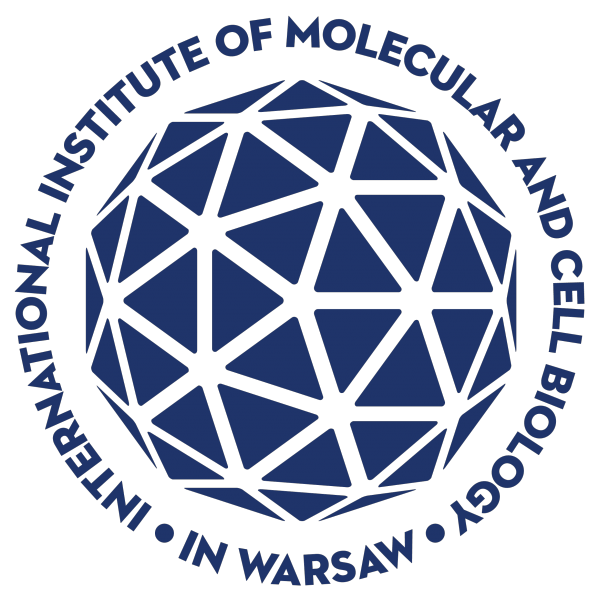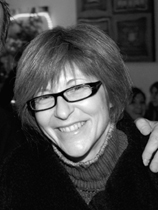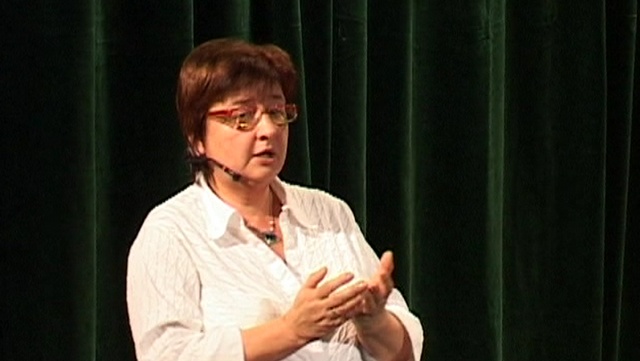Invited speakers - 2019-2014
RNA decay and surveillance in human mitochondria
Speaker: dr hab. Roman Szczęsny (IBB PAN)
Talk: RNA decay and surveillance in human mitochondria
Time: 06 December 2019, 09:00 am
Venue: Intercollegiate Faculty of Biotechnology, Abrahama 58, hall 042
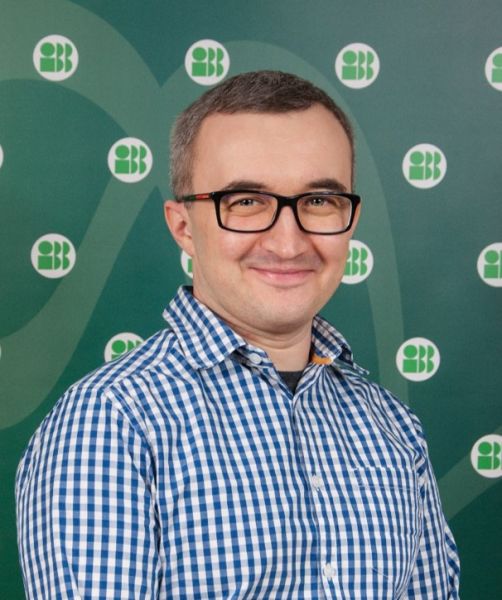 Dr Roman Szczesny graduated from the University of Warsaw in 2004 and joined a PhD programme at the Institute of Biochemistry and Biophysics, PAS. In his thesis he showed that human RNA helicase SUV3 is an essential enzyme for decay and surveillance of mitochondrial RNA (mtRNA). He also described cell death pathways that are activated upon SUV3 silencing. During that time he received several scholarships to work in France and Finland. After obtaining his PhD, he continued to work on mtRNA decay. He supervised the project that led to the identification of the long sought mitochondrial ribonuclease – PNPase, and the discovery of new structures named D-foci where mtRNA degradation occurs. In 2009 he joined Andrzej Dziembowski’s laboratory where he studied mechanisms responsible for RNA surveillance. Having established his group at the Institute of Biochemistry and Biophysics PAS in Warsaw he continues his research into the metabolism of human mitochondrial RNA. His main focus is unraveling mitochondrial gene expression regulation by identification and functional analysis of novel factors engaged in the process. In his research he combines molecular biology, biochemistry and high-throughput methods, including genome-wide siRNA screenings, which provide broad insight into various steps of mitochondrial gene regulation.
Dr Roman Szczesny graduated from the University of Warsaw in 2004 and joined a PhD programme at the Institute of Biochemistry and Biophysics, PAS. In his thesis he showed that human RNA helicase SUV3 is an essential enzyme for decay and surveillance of mitochondrial RNA (mtRNA). He also described cell death pathways that are activated upon SUV3 silencing. During that time he received several scholarships to work in France and Finland. After obtaining his PhD, he continued to work on mtRNA decay. He supervised the project that led to the identification of the long sought mitochondrial ribonuclease – PNPase, and the discovery of new structures named D-foci where mtRNA degradation occurs. In 2009 he joined Andrzej Dziembowski’s laboratory where he studied mechanisms responsible for RNA surveillance. Having established his group at the Institute of Biochemistry and Biophysics PAS in Warsaw he continues his research into the metabolism of human mitochondrial RNA. His main focus is unraveling mitochondrial gene expression regulation by identification and functional analysis of novel factors engaged in the process. In his research he combines molecular biology, biochemistry and high-throughput methods, including genome-wide siRNA screenings, which provide broad insight into various steps of mitochondrial gene regulation.
Mitochondria are organelles present in most eukaryotic cells that play a vital role in maintaining cellular homeostasis. The function of these organelles depends on the crosstalk between two genomes: nuclear and mitochondrial. Most of the proteins present in mitochondria are encoded in the nuclear genome and are imported into mitochondria upon synthesis in the cytoplasm. Nevertheless, 13 proteins encoded within the mitochondrial genome are essential for human as they are key components of the respiratory complexes. Since human mitochondria seem to have limited possibilities to regulate gene expression by altering the transcription initiation rate, posttranscriptional processes, including RNA degradation, are of great importance for proper mitochondrial and cellular homeostasis. The machinery responsible for mitochondrial RNA decay in humans had remained unknown for many years. We have contributed significantly to the identification and description of the RNA-degradation pathways in human mitochondria. This process, its actors, as well as the consequences of its dysfunction on cellular homeostasis, will be presented.
Contagion, 15 years on
Speaker: Gina Czarnecki
Talk: Contagion, 15 years on
Time: 29 November 2019, 09:00 am
Venue: Intercollegiate Faculty of Biotechnology, Abrahama 58, hall 042
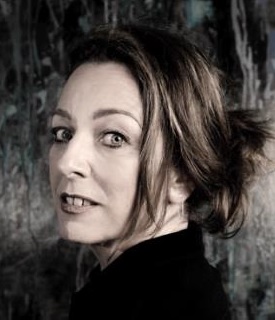 Gina Czarneckis’ multi-disciplinary arts practice involves the creation media installation video, sculpture, participatory and site specific works that sit at the intersection of art, design, technology and science. Born in Immingham 1965, Gina studied Fine Art at Grimsby School of Art and went on to her BA Hons course at Wimbledon School of Art 1984-7. She started her professional career making animated film and video in the 1980s whilst studying painting. After graduating she developed this into combining live action and drawing whilst working at the London Film-Makers Co-op, running the workshop until 1991. Her postgraduate in Duncan of Jordanstone, Dundee, Scotalnd, (91-2) took her work in film and video through to 3D and computer environments. From 2009 her work developed into participatory sculptures, using biomedical materials and processes, worked on community projects that have helped to shape and transform new hospitals and worked to develop new systems for science engagement and bio-art (Heirloom 2016) and more recently working on the intersection of product design, engineering and business with her project/product ‘Koffin’and ‘Who we are Now”. 2018. Ginas work has been exhibited internationally at venues including Brisbane International Arts Festival, Ars Electronica, Linz, Lumiere, UK, Sundance Film Festival & retrospective & monograph exhibitions include ‘Humancraft ‘ moving image Centre, New Zealand, (2005) and the Bluecoat, Liverpool (2010) She was awarded a Creative Scotland Award (2002) Fleck Fellowship Banff (2004) Best Australian/New Zealand Dance Film (2005) and numerous other prizes. Her work is in both public and private collections.
Gina Czarneckis’ multi-disciplinary arts practice involves the creation media installation video, sculpture, participatory and site specific works that sit at the intersection of art, design, technology and science. Born in Immingham 1965, Gina studied Fine Art at Grimsby School of Art and went on to her BA Hons course at Wimbledon School of Art 1984-7. She started her professional career making animated film and video in the 1980s whilst studying painting. After graduating she developed this into combining live action and drawing whilst working at the London Film-Makers Co-op, running the workshop until 1991. Her postgraduate in Duncan of Jordanstone, Dundee, Scotalnd, (91-2) took her work in film and video through to 3D and computer environments. From 2009 her work developed into participatory sculptures, using biomedical materials and processes, worked on community projects that have helped to shape and transform new hospitals and worked to develop new systems for science engagement and bio-art (Heirloom 2016) and more recently working on the intersection of product design, engineering and business with her project/product ‘Koffin’and ‘Who we are Now”. 2018. Ginas work has been exhibited internationally at venues including Brisbane International Arts Festival, Ars Electronica, Linz, Lumiere, UK, Sundance Film Festival & retrospective & monograph exhibitions include ‘Humancraft ‘ moving image Centre, New Zealand, (2005) and the Bluecoat, Liverpool (2010) She was awarded a Creative Scotland Award (2002) Fleck Fellowship Banff (2004) Best Australian/New Zealand Dance Film (2005) and numerous other prizes. Her work is in both public and private collections.The essential role of Th17/Treg cells in inflammation
Speaker: Zhi Jane Chen, Associate Professor (Tenure Track) of immunology in Faculty of Biochemistry and Molecular Medicine, University of Oulu, Finland.
Talk: The essential role of Th17/Treg cells in inflammation
Time: 25th October 2019, 09:00 am
Venue: Intercollegiate Faculty of Biotechnology, Abrahama 58, hall 042
She graduated from Beijing Medical University (current name: Peking University Health Science Center). She carried out her Ph.D study at the Turku Centre for Biotechnology, University of Turku, Finland. During 2005-2007, she was a postdoctoral fellow at the National Institute of Arthritis and Musculoskeletal and Skin Diseases (NIAMS)/NIH, USA. In 2008-2010, she received a Postdoctoral Fellowship from the Academy of Finland and worked in the Faculty of Medicine, University of Turku. In 2012, she was awarded as an Academy of Finland research fellow, became a principle investigator and group leader working at the Turku Centre for Biotechnology, University of Turku. In 2014, she earned Docentship in Immunology from Faculty of Medicine, University of Turku and started independently supervising Ph.D students. In 2018, she joined the International Centre for Cancer Vaccine Science (ICCVS), University of Gdansk as a group leader. At the end of 2018, she was appointed as an Associate Professor in University of Oulu, Finland. Her research focuses on understanding the role of Th17 and Treg cells in regulating the inflammatory/autoimmune and tumorigenesis. Her group studies Th17 and iTreg differentiation at multiple levels from mouse to human and integrate the results to build a comprehensive view of the processes.
α-subunits of voltage-gated channels in vertebrates development and disease
Speaker: prof. Vladimir Korzh, International Institute of Molecular and Cell Biology, Warsaw, Poland
Talk: α-subunits of voltage-gated channels in vertebrates development and disease
Time: 20th September 2019, 14:00 pm
Venue: Intercollegiate Faculty of Biotechnology, Abrahama 58, hall 042
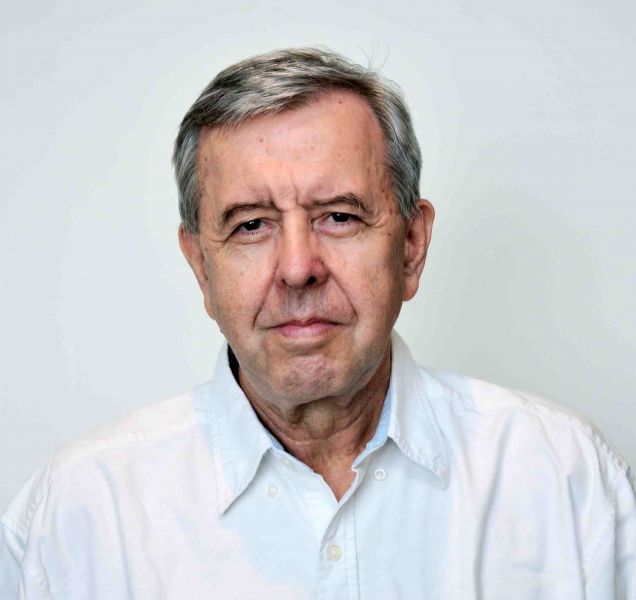 Kcnb1-containing voltage-gated potassium channels consist of two types of α-subunits: (i) electrically active Kcnb1 subunits and (ii) silent or modulatory α-subunits. Voltage-gated potassium channels are viewed as regulators of electrical activity of the plasma membrane in excitable cells, a role that is performed by transmembrane protein domains of α-subunits. Genetic studies revealed a role for this region in human neurodevelopmental disorders, such as epileptic encephalopathy. The N- and C-terminals of α-subunits interact to form the cytoplasmic subunit of heterotetrameric potassium channels that regulate their activity. Subsequent animal studies revealed the developmental functions of Kcnb1-containing voltage-gated potassium channels, illustrating their role during brain development and reproduction. The functions of potassium channels will be discussed in the context of regulatory interactions between electrically active and regulatory α-subunits during zebrafish development.
Kcnb1-containing voltage-gated potassium channels consist of two types of α-subunits: (i) electrically active Kcnb1 subunits and (ii) silent or modulatory α-subunits. Voltage-gated potassium channels are viewed as regulators of electrical activity of the plasma membrane in excitable cells, a role that is performed by transmembrane protein domains of α-subunits. Genetic studies revealed a role for this region in human neurodevelopmental disorders, such as epileptic encephalopathy. The N- and C-terminals of α-subunits interact to form the cytoplasmic subunit of heterotetrameric potassium channels that regulate their activity. Subsequent animal studies revealed the developmental functions of Kcnb1-containing voltage-gated potassium channels, illustrating their role during brain development and reproduction. The functions of potassium channels will be discussed in the context of regulatory interactions between electrically active and regulatory α-subunits during zebrafish development.
Evolutionary and medical implications of the huge diversity of surface polysaccharides in the Enterobacteriales
Speaker: Dr Rafał Mostowy, Group Leader in Microbial Genomics, MCB UJ, Honorary Research Fellow, Imperial College London
Talk: Evolutionary and medical implications of the huge diversity of surface polysaccharides in the Enterobacteriales
Time: 14th June 2019, 9:00 am
Venue: Intercollegiate Faculty of Biotechnology, Abrahama 58, hall 042
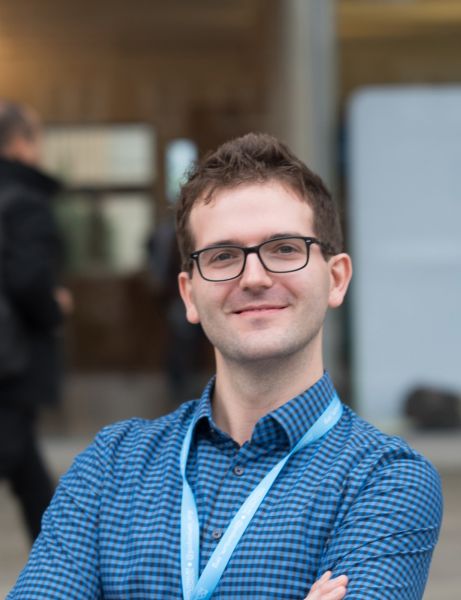
Dr Rafał Mostowy studied theoretical physics at the Jagiellonian University and the University of Copenhagen, after which he pursued doctoral studies in evolutionary biology at ETH Zurich. In 2012, he became a postdoctoral fellow at Imperial College London to study evolutionary dynamics of a major bacterial pathogen, Streptococcus pneumoniae. During this time, he developed interest and expertise in genetics of bacterial surface polysaccharides, both in Gram-positive and Gram-negative bacteria. In 2019, he moved from the University of Oxford to Jagiellonian University in Krakow to start his own lab. The newly founded Microbial Genomics group at the Malopolska Centre of Biotechnology uses bioinformatics, computer simulations and statistical methods to provide insight into emergence of antigenic diversity in bacteria, and the role of bacteriophages therein. This research helps us to understand and predict genetic changes in pathogenic bacteria and thus contribute to the co-creation of next-generation drugs.
Lipid-specific T cells and the skin
Speaker: prof. Graham Ogg, MRC Human Immunology Unit and Oxford University Hospitals, UK
Talk: Lipid-specific T cells and the skin
Time: 24th May 2019, 9:00 am
Venue: Intercollegiate Faculty of Biotechnology, Abrahama 58, hall 042
.jpg) Professor Graham Ogg is the Deputy Head of MRC Human Immunology Unit of the University of Oxford and he is based at the Weatherall Institute of Molecular Medicine. Graham is a consultant dermatologist and a scientist. He completed his doctoral training with University of Oxford and his clinical training in Oxford and London. Since, he had numerous prestigious appointments, such as the chairman of British Society of Investigative Dermatology and chairman of British Association of Dermatologists Research Committee. Currently, he is an MRC Programme Leader, National Institute of Health Research (NIHR) Senior Investigator and UK’s Clinical Lead for Dermatology. He is also an editor for JAMA Dermatology, Clinical and Developmental Immunology as well as Clinical and Experimental Dermatology.
Professor Graham Ogg is the Deputy Head of MRC Human Immunology Unit of the University of Oxford and he is based at the Weatherall Institute of Molecular Medicine. Graham is a consultant dermatologist and a scientist. He completed his doctoral training with University of Oxford and his clinical training in Oxford and London. Since, he had numerous prestigious appointments, such as the chairman of British Society of Investigative Dermatology and chairman of British Association of Dermatologists Research Committee. Currently, he is an MRC Programme Leader, National Institute of Health Research (NIHR) Senior Investigator and UK’s Clinical Lead for Dermatology. He is also an editor for JAMA Dermatology, Clinical and Developmental Immunology as well as Clinical and Experimental Dermatology.
His early pioneering work on MHC tetramers laid foundation to investigating specific T cell responses. His current research interest is the interactions between the cellular immune response and the epidermis. Graham’s research and clinical work is based on the investigations of mechanisms underlying inflammatory skin disease. Particular areas of focus are the roles of unconventional CD1a-restricted T cells and innate lymphoid cells. Graham’s scientific work is recognised worldwide, and he received multiple awards in recognition of this, including Biomedical Research Centre Principal Fellowship, Pharmacia Allergy Research Foundation Award, Dermatologist International Achievement Award.
DNA repair processes as markers for personalized cancer therapies
Speaker: Dr. Pawel Zawadzki, Division of Molecular Biophysics, Adam Mickiewicz University Poznan, Poland
Talk: DNA repair processes as markers for personalized cancer therapies.
Time: 17th May 2019, 9:00 am
Venue: Intercollegiate Faculty of Biotechnology, Abrahama 58, hall 042
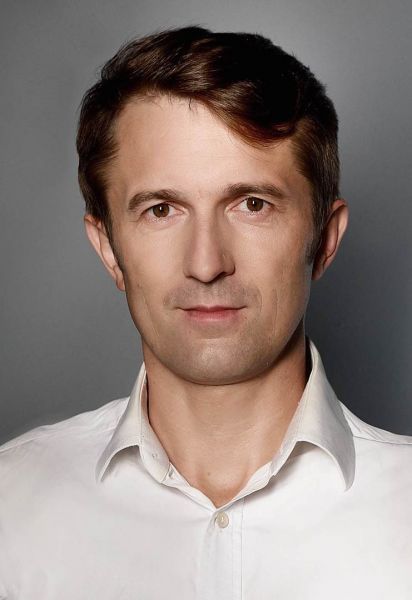 Personalized medicine is an approach to improve treatment of an individual patient by taking into account specific changes in individual’s DNA. One aspect of this is an assessment of DNA repair mechanisms to tailor cancer treatment based on patient genomic profiles. Thus, evaluation of the efficiency of DNA repair provides a unique opportunity to apply targeted cancer therapies. We work on identifying DNA repair pathways involved in cell chemosensitivity by RNAi knockdown screening. We tested RNAi library for genes involved in different DNA repair pathways using the hTERT RPE-1 cell line. Silencing RNA interference (RNAi) of the target DNA repair gene was followed with various drug treatments to identify repair pathway-specific chemosensitivity. For example, we observed that silencing of Nucleotide Excision Repair but not Mismatch Repair drastically increase the sensitivity of the cells to popular chemotherapeutic – cisplatin. In conclusion, poor effectiveness of some repair pathways increase susceptibility to cisplatin. Obtaining this information for individual tumor can potentially help select most effective treatment for patients. We suggest that the comprehensive analysis of DNA repair pathways efficiencies, preferably achieved by cancer whole-genome sequencing could provide a diagnostic tool and should soon be applied in the day-to-day cancer diagnostics.
Personalized medicine is an approach to improve treatment of an individual patient by taking into account specific changes in individual’s DNA. One aspect of this is an assessment of DNA repair mechanisms to tailor cancer treatment based on patient genomic profiles. Thus, evaluation of the efficiency of DNA repair provides a unique opportunity to apply targeted cancer therapies. We work on identifying DNA repair pathways involved in cell chemosensitivity by RNAi knockdown screening. We tested RNAi library for genes involved in different DNA repair pathways using the hTERT RPE-1 cell line. Silencing RNA interference (RNAi) of the target DNA repair gene was followed with various drug treatments to identify repair pathway-specific chemosensitivity. For example, we observed that silencing of Nucleotide Excision Repair but not Mismatch Repair drastically increase the sensitivity of the cells to popular chemotherapeutic – cisplatin. In conclusion, poor effectiveness of some repair pathways increase susceptibility to cisplatin. Obtaining this information for individual tumor can potentially help select most effective treatment for patients. We suggest that the comprehensive analysis of DNA repair pathways efficiencies, preferably achieved by cancer whole-genome sequencing could provide a diagnostic tool and should soon be applied in the day-to-day cancer diagnostics.
Soft rot bacteria and their interaction with potato
Speaker: Prof. Minna Pirhonen (University of Helsinki)
Talk: Soft rot bacteria and their interaction with potato
Time: 12th April 2019, 9:00 am
Venue: Intercollegiate Faculty of Biotechnology, Abrahama 58, hall 042
.jpg) Minna Pirhonen is an Associate Professor and University Lecturer at the Department of Agricultural Sciences, University of Helsinki, Finland and a supervisor for Doctoral Programmes in Microbiology and Biotechnology and Plant Sciences at University of Helsinki. Minna’s main research interest are connected to phytopathology, plant physiology, genetics and molecular microbiology. She is an author and coauthor of more than fifty research and review publications targeting different aspects of interaction of plant pathogenic and plant associated bacteria with their plant hosts as well as isolation and characterization of soft rot bacteria.
Minna Pirhonen is an Associate Professor and University Lecturer at the Department of Agricultural Sciences, University of Helsinki, Finland and a supervisor for Doctoral Programmes in Microbiology and Biotechnology and Plant Sciences at University of Helsinki. Minna’s main research interest are connected to phytopathology, plant physiology, genetics and molecular microbiology. She is an author and coauthor of more than fifty research and review publications targeting different aspects of interaction of plant pathogenic and plant associated bacteria with their plant hosts as well as isolation and characterization of soft rot bacteria.
Associate Professor Pirhonen was one of the first scientists (1993) to discover and describe that plant pathogenic bacteria communicate with each other in environment (the mechanism broadly known now as quorum sensing) and that they can globally coordinate their populational response during infection of the host. This fundamental work was a basis to understand that bacteria can be perceived as semi-multicellular organisms living under natural conditions in consortia and “talking to each other all the time”.
Mixed-Lineage Kinase 4 (MLK4) – a new player in breast cancer progression
Speaker: dr Anna Marusiak (CENT Warszawa)
Talk: Mixed-Lineage Kinase 4 (MLK4) – a new player in breast cancer progression
Time: 5th April 2019, 9:00 am
Venue: Intercollegiate Faculty of Biotechnology, Abrahama 58, hall 042
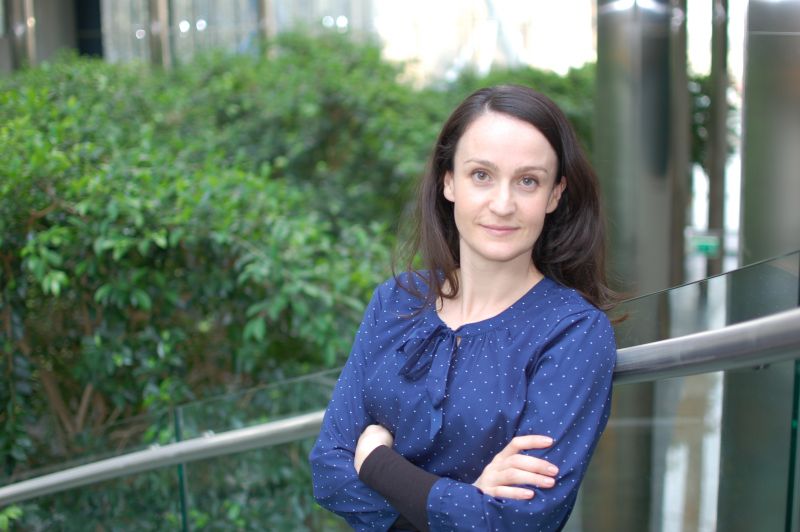
In December 2015 I started a position as a postdoctoral fellow at the Centre of New Technologies in the Laboratory of Experimental Medicine. The grants that I have been awarded, Fuga by NCN and Homing by FNP, allowed me to investigate the role of MLK4 in breast cancer progression. MLK4 is a serine/threonine kinase that plays a role in a variety of cellular processes. According to TCGA, amplification and mRNA upregulation of MLK4 is present in 23% of invasive breast carcinoma and our transcriptomic analysis revealed that it is most abundantly expressed in triple-negative breast cancer subtype. Nevertheless, the role of MLK4 in the pathogenesis of breast cancer has been poorly understood so far. My talk will focus on our recent data where we identified MLK4 as a novel therapeutic target for triple-negative breast cancer.
Charging the Code - insights into tRNA Modification Enzymes
Speaker: dr Sebastian Glatt (Max Planck Research Group Leader z Małopolskie Centrum Biotechnologii UJ, Kraków)
Talk: Charging the Code - insights into tRNA Modification Enzymes
Time: 15th March 2019, 9:00 am
Venue: Intercollegiate Faculty of Biotechnology, Abrahama 58, hall 042
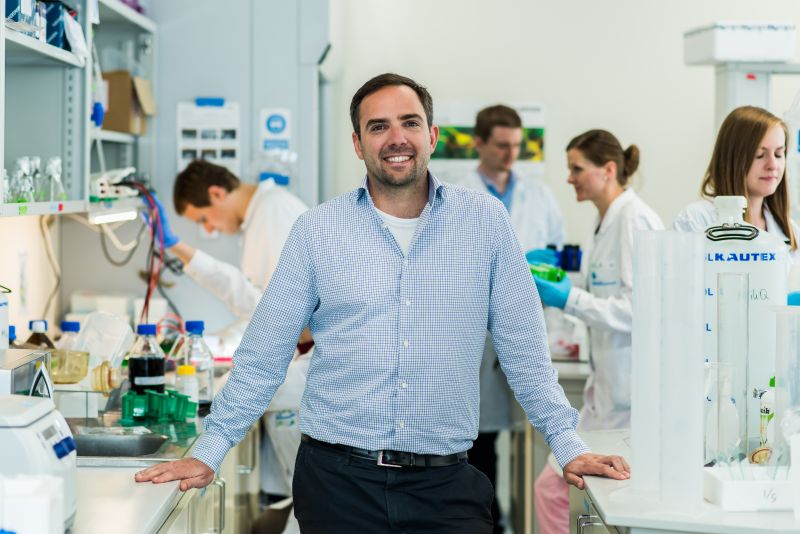 My whole scientific career is driven by a deep fascination for the complex molecular mechanisms that allow cells to reproduce, adapt to changing environmental conditions and differentiate into specialized cell types by the activation of specific gene expression programs. These processes are particularly important in multi-cellular organisms, as each individual cell carries the identical genetic information, but needs to produce selected sets of proteins depending on the specialized function of the respective cell type and different external triggering signals. Protein synthesis can be subdivided into different successive processes, called transcription and translation, which are both susceptible to specific regulatory mechanisms. Whereas, transcription describes the production of mRNA molecules from activated genes by RNA polymerases, the subsequent process describes the translation of mRNA encoded sequence information into correctly assembled chains of linked amino acids. During the final step, these peptide chains fold into their correct and enzymatically active three dimensional structure due to their intrinsic properties or with the help of associated chaperoning factors.
My whole scientific career is driven by a deep fascination for the complex molecular mechanisms that allow cells to reproduce, adapt to changing environmental conditions and differentiate into specialized cell types by the activation of specific gene expression programs. These processes are particularly important in multi-cellular organisms, as each individual cell carries the identical genetic information, but needs to produce selected sets of proteins depending on the specialized function of the respective cell type and different external triggering signals. Protein synthesis can be subdivided into different successive processes, called transcription and translation, which are both susceptible to specific regulatory mechanisms. Whereas, transcription describes the production of mRNA molecules from activated genes by RNA polymerases, the subsequent process describes the translation of mRNA encoded sequence information into correctly assembled chains of linked amino acids. During the final step, these peptide chains fold into their correct and enzymatically active three dimensional structure due to their intrinsic properties or with the help of associated chaperoning factors.
During my doctoral thesis I have been studying the consequences of deregulated protein synthesis, leading to an overproduction of certain proteins that are essential for the development of human squamous cell carcinomas. During my postdoctoral time, I have been involved in different basic research projects that focused on understanding the fundamental structural and functional aspects of transcriptional and translational regulation. In detail, I have been studying the structure and function of specific and general transcription factors, which are needed to recruit RNA polymerases and activate gene transcription. In addition, I have been involved in the structural dissection of RNA polymerases themselves and so called chromatin remodelling complexes, which regulate the access of all the above described factors to their respective DNA binding sites in the context of the tight network of condensed chromatin. For most of the above mentioned projects, I have been involved through direct mentoring/supervision of PhD students or contributed my technical expertise in structural biology and protein biochemistry techniques.
My prime scientific interest focused on the structural and functional characterization of specific regulatory events of the translation machinery. In detail, the speed and continuity at which ribosomes move along mRNAs during the elongation phase of translation varies with the nucleotide sequence, influencing not only the rates but also the folding and stability of the emerging nascent polypeptide chains. As tRNA selection in the A-site of ribosomes is a rate-limiting step during elongation phase, the use of synonymous codons and specific base modifications in the wobble base position of tRNAs influences local elongation speed and aids co-translational protein folding. As errors in these tRNA modifications cascades are causing intellectual disabilities, neurodegenerative diseases and cancers in humans, they have caught my special attention over the last years. Therefore, my Max Planck Research Group at the MCB is continuing previous efforts to understand the structure and function of the highly conserved eukaryotic Elongator complex, responsible for conducting specific chemical modifications in the wobble base position of tRNAs. In detail, we use x-ray crystallography and electron microscopy to obtain snapshots of the involved proteins and try to deduce their biochemical activities from the observed structures. Subsequently, we employ different in vitro and in vivo approaches to validate and challenge our structure based working hypotheses. In addition, together with various national and international collaboration partners we have recently started to work on related tRNA modification pathways and other translation control pathways, that are important for stem cell maintenance and differentiation.
Last but not least, I would like to highlight that these cellular mechanisms under investigation are not only highly conserved, vaguely characterized and extremely complex, but are also of high clinical relevance and importance. Therefore, I believe that the results and scientific insights from our ongoing research projects will pave the way for the development of novel diagnostic and therapeutic strategies to improve the life span and life quality of the affected patients.
Interspecies signaling in plant associated bacteria
Speaker: dr Vittorio Venturi (International Centre for Genetic Engineering and Biotechnology (ICGEB),Trieste, Italy)
Talk: Interspecies signaling in plant associated bacteria
Time: 08th March 2019, 9:00 am
Venue: Intercollegiate Faculty of Biotechnology, Abrahama 58, hall 042
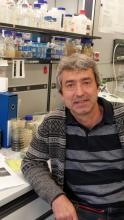
dr Vittorio Venturi graduated from Edinburgh University, UK, and received his Ph.D. degree in Microbiology from the University of Utrecht, The Netherlands. During his PhD research he focused in the regulation of iron-transport processes of beneficial plant associated bacteria which promote plant growth; the monopolization of iron nearby plant roots is an important trait which keeps microbial pathogens away. He then moved as a postdoctoral fellow to the International Centre for Genetic Engineering & Biotechnology (ICGEB), Trieste, Italy, where he started investigating intercellular signaling among bacteria. He then went on to become Group Leader at ICGEB continuing his studies on intercellular signaling. He has published over 140 research articles in peer-reviewed international journals. He is interested in (i) how plant associated bacteria undergo interspecies communication and interkingdom signaling with plants and (ii) plant microbiomes and the development of microbial products for a more sustainable agriculture https://www.icgeb.org/vittorio-venturi.html
Abstract: Just like what occurs in humans, plants have been recently recognized as meta-organisms possessing a distinct microbiome that have a close relationship with their associated microorganisms. The plant microbiome presents an additional reservoir of genes that the plant can have access to when needed. Plant health is thought to heavily depend also on its microbiome and signaling among microorganisms is crucial for the establishment of the microbial community. Understanding how bacteria undergo interspecies signaling in the microbiome will be a big challenge for future studies. We are using several rice diseases as a model of interspecies bacterial interactions, which also highlights their role in bacterial plant pathogenicity. In addition, we are designing experiments to begin to understand how beneficial plant associated bacteria communicate and establish multispecies communities. Understanding these signaling pathways will help in devising new ways for a more sustainable agriculture.
Protein deubiquitylation controls the degradation of mislocalised secretory and membrane proteins and regulates endoplasmic reticulum function
Speaker: dr Paweł Leźnicki (University of Manchester, Manchester, United Kingdom)
Talk: Protein deubiquitylation controls the degradation of mislocalised secretory and membrane proteins and regulates endoplasmic reticulum function
Time: 23th November 2018, 9:00 am
Venue: Intercollegiate Faculty of Biotechnology, Abrahama 58, hall 042
.JPG)
The ubiquitin-proteasome system is the predominant degradative route for the disposal of defective and/or unwanted proteins in eukaryotic cells. Polypeptides destined for the proteasome-mediated degradation are most often initially marked by covalent conjugation of a small polypeptide, ubiquitin. Ubiquitin can form polymers (ubiquitin chains or polyubiquitin) linked via lysine residues or the N-terminus of a ubiquitin monomer, and the residue used to build such chains defines the functional outcome of protein ubiquitylation. Importantly, ubiquitylation can be reversed by the action of a group of enzymes collectively known as deubiquitylating enzymes (DUBs). By studying the quality control of membrane and secretory proteins destined to the endoplasmic reticulum (ER) we have identified several factors that control the steady-state levels of membrane and secretory proteins that fail to reach the ER. Such mislocalised proteins (MLPs) are routed towards degradation by the BAG6 complex but can be rescued by SGTA, a protein that stimulates MLP deubiquitylation. Further studies defined the molecular basis of these processes. Our subsequent work uncovered an isoform-specific function of a deubiquitylating enzyme, USP35, in apoptosis, lipid metabolism and ER stress. It also opened up new avenues for future work addressing the role of DUBs in controlling the function of intracellular organelles and pathways.
dr Sivakumar Vadivel Gnanasundram (French Institute of Health and Medical Research)
Speaker: dr Sivakumar Vadivel Gnanasundram (French Institute of Health and Medical Research)
Time: 16th November 2018, 9:00 am
Venue: Intercollegiate Faculty of Biotechnology, Abrahama 58, hall 042
.jpg) Dr. Gnanasundram finished his Master’s degree in Microbiology from the University of Madras, India in 2008. He then moved to Indian Institute of Science, India as a Research fellow and worked on novel anti-viral therapeutics using small RNAs targeting Hepatitis C virus RNA translation. For his doctoral degree he enrolled into HBIGS, Heidelberg University, Germany where he worked on Ribosome biogenesis pathway and RNA helicases. He completed his doctoral degree in 2014. For his post-doctoral work he moved to Dr. Robin Fåhraeus group at INSERM, Paris, France.
Dr. Gnanasundram finished his Master’s degree in Microbiology from the University of Madras, India in 2008. He then moved to Indian Institute of Science, India as a Research fellow and worked on novel anti-viral therapeutics using small RNAs targeting Hepatitis C virus RNA translation. For his doctoral degree he enrolled into HBIGS, Heidelberg University, Germany where he worked on Ribosome biogenesis pathway and RNA helicases. He completed his doctoral degree in 2014. For his post-doctoral work he moved to Dr. Robin Fåhraeus group at INSERM, Paris, France.
His present work involves in understanding the oncogenic mechanisms of the Epstein-Barr virus (EBV)-encoded EBNA1. It has been known for over 50 years that EBV is a human oncogenic virus responsible for app. 2-3% of all cancers but unlike other oncogenic viruses, the underlying molecular oncogenic mechanisms of EBV have largely remained obscure. Transgenic mice models have shown a reverse correlation between the expression of the EBNA1 protein and a lymphoma phenotype. Why less of an oncogenic protein would give more cancer could not be explained until now. It turns out that EBNA1 suppresses its own synthesis in cis in order to minimize the production of antigenic peptides for the MHC class I pathway and thereby helps the virus to evade the immune system. His work that is recently published in Nature Communications shows that the stress caused by this suppression of translation leads to the activation of E2F1 and the induction of c-myc. We speculate that the virus is exploiting a cellular pathway whereby cells senses dysfunctional mRNA translation and compensates by inducing ribosomal biogenesis via c-myc.
Discovering multiple roles for AKT1 in skin barrier function and skin disease
Speaker: dr Ryan O'Shaughnessy (University of London)
Talk: Discovering multiple roles for AKT1 in skin barrier function and skin disease
Time: 19th October 2018, 9:00 am
Venue: Faculty of Chemistry, hall F8
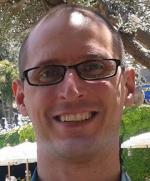
Dr Ryan O'Shaughnessy is a Senior Lecturer in the Centre for Cell Biology and Cutaneous Research. He leads a research programme focused on understanding molecular mechanisms of skin barrier function and through these insights, developing new therapies for diseases of skin barrier function, with particular emphasis on the ichthyoses, eczema and skin cancer.
Ryan completed his PhD in keratinocyte biology at Cancer Research UK, before postdoctoral training at Columbia University, NY and Queen Mary University of London. He started his skin barrier laboratory in 2008 at the UCL Great Ormond Street Institute of Child Health, and in 2012 was the Academic Lead of the Livingstone Skin Research Centre, a research centre dedicated to the study of childhood skin disease. He was awarded a Society of Investigative Dermatology Kligman fellowship in 2002 and the British Society of Investigative Dermatology Young Investigator Award in 2009.
Memberships include the European Society of Dermatological Research and the European Epidermal Barrier Research Network, and the UK Translational Research Network in Dermatology (UK TREND) and he is on the Editorial Board of Experimental Dermatology and on the Committee of the British Society of Investigative Dermatology.
Unlocking the clinical utility of genomic biomarkers in ovarian cancer
Speaker: dr Anna Piskorz (University of Cambridge)
Talk: Unlocking the clinical utility of genomic biomarkers in ovarian cancer
Time: 25th May 2018, 9:00 am
Venue: Intercollegiate Faculty of Biotechnology, Abrahama 58, hall 042
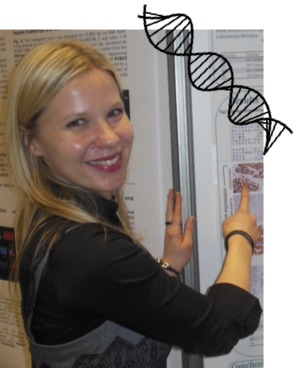
I’m a molecular biologist focus on translational research in high grade serous ovarian cancer (HGSOC). I work on identification of genomic biomarkers that could be applied in clinic as diagnostic, prognostic and predictive biomarkers, helping in better patient stratification, earlier disease diagnosis, monitoring patient response and improving patient management during the course of treatment. My research interests focus on development and implementation of new genomic technologies with potential application in clinic like shallow whole genome sequencing for copy number alterations detection and detection of mutant tumour DNA in body fluids. In my research I use variety of specimens like tumour tissue and body fluids (blood, plasma, ascites). I have a special interest in molecular characterization of ascites samples. I’m engaged in molecular analysis of samples from several clinical trials (ARIEL2, PISSARO, ICON7, ICON8, MADCaP, PHL-093 Toronto, OZM-061 Toronto) and collaborate with scientists from other research centres: University of Calgary (Canada), NKI (The Netherlands), VU University Medical Centre (The Netherlands), Institute of Cancer Sciences University of Glasgow (UK). I'm lead consultant for the molecular analysis of HGSOC samples in collaborations with the Ovarian Tumour Tissue Analysis (OTTA) and the Multidisciplinary Ovarian Cancer Outcomes Group (MOCOG) consortiums. One of my main aims is to transform HGSOC patients' care in Addenbrooks's hospital through the implementation of real time molecular profiling of every women with HGSOC by setting up workflow between CRUK CI, pathologists, tissue bank and Cancer Molecular Diagnostic Laboratory.
How Art and Design can help Redesign Science itself; both the scientific method and the social embedding of science
Speaker: prof. Roger Malina (The University of Texas at Dallas)
Talk: How Art and Design can help Redesign Science itself; both the scientific method and the social embedding of science
Time: 11th May 2018, 9:00 am
Venue: Intercollegiate Faculty of Biotechnology, Abrahama 58, hall 042
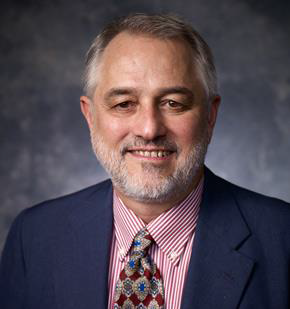 Roger Malina is a physicist, astronomer and executive editor of the Leonardo publications at MIT Press. With dual appointments as a professor of arts and technology and a professor of physics at UT Dallas, he focuses on connections among the natural sciences and arts, design and humanities. He is a former director of the Observatoire Astronomique de Marseille Provence (OAMP) in Marseille, and member of its observational cosmology group, which performs investigations on the nature of dark matter and dark energy. He is also a member of the Mediterranean Institute for Advanced Study (Institut Méditerranéen de Recherches Avancées, IMERA), an institute he helped to organize. IMERA seeks to contribute to trans-disciplinarity between the sciences and the arts and places emphasis on the human dimensions of the sciences. Malina was also a member of the jury for the Buckminster Fuller Challenge 2011, which awards a prize to those who create strategies with potential to “solve humanity's most pressing problems.” Malina's specialty is space instrumentation. He was the principal investigator for the NASA Extreme Ultraviolet Explorer satellite at the University of California, Berkeley. The satellite was the first orbiting observatory to map the sky in the extreme ultraviolet band. The team at UC Berkeley had to invent new kinds of cameras, telescopes and data analysis techniques. The team was one of the first university groups to take over operation of a NASA satellite and operate it from a university, with teams of students. For 25 years, Malina has been involved with the Leonardo organizations, which his father founded in San Francisco and Paris. The organizations strive to promote work that explores the interactions between the arts and sciences, as well as between the arts and new technologies. Malina earned his bachelor's degree in physics from Massachusetts Institute of Technology in 1972, and his doctorate in astronomy from the University of California, Berkeley in 1979.
Roger Malina is a physicist, astronomer and executive editor of the Leonardo publications at MIT Press. With dual appointments as a professor of arts and technology and a professor of physics at UT Dallas, he focuses on connections among the natural sciences and arts, design and humanities. He is a former director of the Observatoire Astronomique de Marseille Provence (OAMP) in Marseille, and member of its observational cosmology group, which performs investigations on the nature of dark matter and dark energy. He is also a member of the Mediterranean Institute for Advanced Study (Institut Méditerranéen de Recherches Avancées, IMERA), an institute he helped to organize. IMERA seeks to contribute to trans-disciplinarity between the sciences and the arts and places emphasis on the human dimensions of the sciences. Malina was also a member of the jury for the Buckminster Fuller Challenge 2011, which awards a prize to those who create strategies with potential to “solve humanity's most pressing problems.” Malina's specialty is space instrumentation. He was the principal investigator for the NASA Extreme Ultraviolet Explorer satellite at the University of California, Berkeley. The satellite was the first orbiting observatory to map the sky in the extreme ultraviolet band. The team at UC Berkeley had to invent new kinds of cameras, telescopes and data analysis techniques. The team was one of the first university groups to take over operation of a NASA satellite and operate it from a university, with teams of students. For 25 years, Malina has been involved with the Leonardo organizations, which his father founded in San Francisco and Paris. The organizations strive to promote work that explores the interactions between the arts and sciences, as well as between the arts and new technologies. Malina earned his bachelor's degree in physics from Massachusetts Institute of Technology in 1972, and his doctorate in astronomy from the University of California, Berkeley in 1979.
Inne oblicze GMO, A.D. 2018
Speaker: prof. Tadeusz Twardowski (Instytut Chemii Bioorganicznej PAN w Poznaniu)
Talk: Inne oblicze GMO, A.D. 2018
Time: 27 kwietnia 2018 r., godz: 9:00
Venue: Intercollegiate Faculty of Biotechnology, Abrahama 58, hall 042
More on the website: https://ug.edu.pl/media/aktualnosci/75653/prof_tomasz_twardowski_o_gmo_ad_2018
Targeting mitochondrial DNA in lung diseases.
Speaker: prof. Bartosz Szczęsny (University of Texas Medical Branch at Galveston)
Talk: Targeting mitochondrial DNA in lung diseases
Time: 20th April 2018, 9:00 am
Venue: Intercollegiate Faculty of Biotechnology, Abrahama 58, hall 042
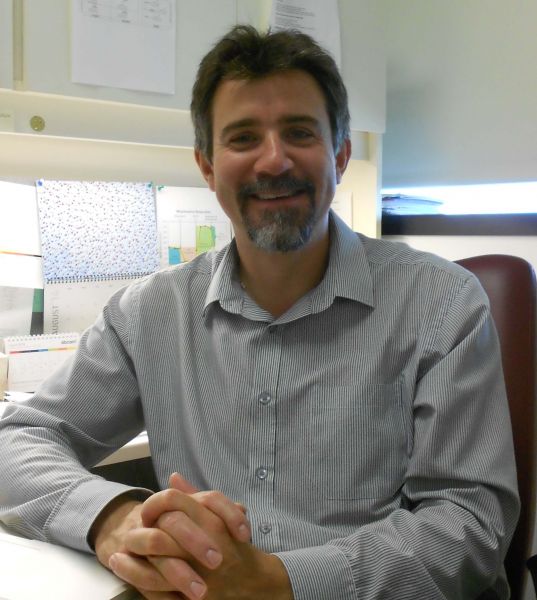 Dr. Szczesny received his BA, MS, and PhD degrees from the University of Wroclaw, Poland. He completed his post-doctoral training at the University of Texas Medical Branch at Galveston, in the United States, in Dr. Mitra’s laboratory, working on mitochondrial DNA repair. His research training includes positions at Strathclyde University, Glasgow, Scotland; Lund University, Sweden; and University in Louvain la Neuve, Belgium.
Dr. Szczesny received his BA, MS, and PhD degrees from the University of Wroclaw, Poland. He completed his post-doctoral training at the University of Texas Medical Branch at Galveston, in the United States, in Dr. Mitra’s laboratory, working on mitochondrial DNA repair. His research training includes positions at Strathclyde University, Glasgow, Scotland; Lund University, Sweden; and University in Louvain la Neuve, Belgium.
Dr. Szczesny is currently an Associate Professor in the Department of Anesthesiology at the University of Texas Medical Branch, and a Staff Scientist at the Shriners Hospital for Children in Galveston, one of the leading pediatric burn centers in the United States. Dr. Szczesny is an expert in mitochondrial DNA damage and repair, and on the signaling of mitochondrial dysfunction in various pathological conditions. His major research interests are mitochondrial dysfunction in acute lung injury and development of new treatment strategy in lung cancer targeting mitochondria/mitochondrial DNA.
To rot, or not to rot: comprehensive view on the interactions of phytopathogenic pectobacteria with plants
Speaker: dr Vladimir Y. Gorshkov (Kazan Institute of Biochemistry and Biophysics)
Talk: To rot, or not to rot: comprehensive view on the interactions of phytopathogenic pectobacteria with plants
Time: 9th March 2018, 9:00 am
Venue: Intercollegiate Faculty of Biotechnology, Abrahama 58, hall 042
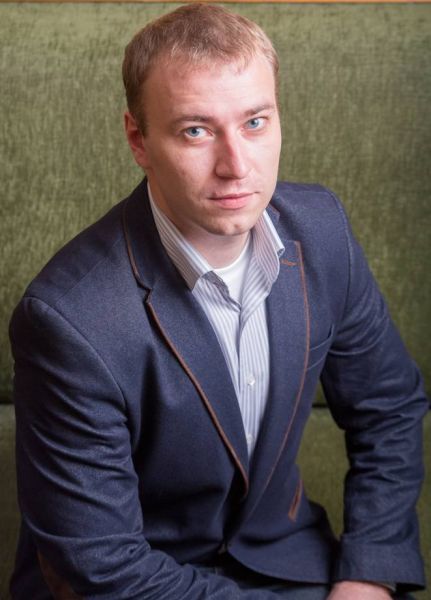
Dr. Vladimir Y. Gorshkov is a Senior Researcher at Federal Research Center: Kazan Science Centre of the Russian Academy of Sciences, Russian Academy of Science in Kazan, and a Senior Lecturer at Kazan Federal University, Russia. His main research interests are connected wiht phytopathology, plant physiology, microbiology and molecular biology. Vladimir defended his Phd thesis entitled “Cell-to-cell communication in the populations of Pectobacterium atrosepticum SCRI1043 during the interaction with host plant and under starvation” in 2009 and since then his major scientific interest is signal exchange between bacteria and host plants during interaction. Vladimir is an expert in molecular aspects of symbiosis and pathogenesis and at the moment serves as a Phd student supervisor of 3 PhD students. He is an author and co-author of more than 20 original research papers. His beloved bug is Pectobacterium atrosepticum and bellowed host plant: potato and tobacco.
prof. Alfredo Nicosia, University of Naples
Speaker: prof. Alfredo Nicosia, University of Naples (Chief Executive Officer (CEO) and Co-founder of Nouscom AG)
Talk: Soon
Time: 23th February 2018, 9:00 am
Venue: Intercollegiate Faculty of Biotechnology, Abrahama 58, hall 042

Prof. Alfredo Nicosia is the Chief Executive Officer(CEO) and Co-founder of Nouscom AG, a biotech company dedicated to the development of next generation immunotherapies to beat cancer (www.nouscom.com). He is also CEO of Reithera srl, a Biotech involved in the development of vector-based anti-infectious vaccines.
Alfredo was a co-founder of Okairos (recently acquired by GSK) and served as the company’s Chief Scientific Officer, contributing to the preclinical and clinical development of a number of vaccines (including vaccines against HCV, Ebola and malaria) and monoclonal antibodies against infectious diseases and cancer.
Alfredo’s experience includes the positions of senior director of the Viral Diseases Vaccine program at Istituto di Ricerche di Biologia Molecolare (IRBM), staff scientist at the European Molecular Biology Laboratory (EMBL) in Heidelberg, Germany and project leader at the Sclavo Research Centre in Siena, Italy.
He has also published over 150 articles in leading journals on a range of subjects, including viral and bacterial infection and vaccines and holds a number of patents and patent applications.
Alfredo holds a degree in chemistry from the University of Rome, Italy and is a full Professor of Molecular Biology at the University Federico II, Naples (Italy).
Entry of human coronaviruses
Speaker: Krzysztof Pyrć, PhD, DSc, JU professor (Laboratory of Virology, Jagiellonian University)
http://virogenetics.info/
Talk: Entry of human coronaviruses
Time: 25th January 2018, 9:00 am
Venue: Intercollegiate Faculty of Biotechnology, Abrahama 58, hall 042
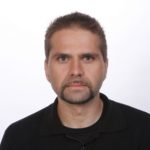 The virus entry is one of the key points of the infection, and cell/tissue susceptibility to a large extent determines the nature and severity of the disease. Using a variety of techniques we have mapped the route of entry for several coronaviruses, including human coronavirus NL63 and human coronavirus OC43. Available data on coronavirus’ entry originate frequently from studies employing immortalized cell lines or undifferentiated cells. Here, using the most advanced 3D tissue culture system mimicking the epithelium of conductive airways, we systematically mapped entry of viruses into susceptible cell. Considering low specificity of chemical inhibitors targeting different endocytic pathways, we decided to track the fate of a single virus particle in the cell with confocal microscopy. Obtained results were validated with developed 3D image analysis algorithms and subsequent statistical assessment.
The virus entry is one of the key points of the infection, and cell/tissue susceptibility to a large extent determines the nature and severity of the disease. Using a variety of techniques we have mapped the route of entry for several coronaviruses, including human coronavirus NL63 and human coronavirus OC43. Available data on coronavirus’ entry originate frequently from studies employing immortalized cell lines or undifferentiated cells. Here, using the most advanced 3D tissue culture system mimicking the epithelium of conductive airways, we systematically mapped entry of viruses into susceptible cell. Considering low specificity of chemical inhibitors targeting different endocytic pathways, we decided to track the fate of a single virus particle in the cell with confocal microscopy. Obtained results were validated with developed 3D image analysis algorithms and subsequent statistical assessment.
Our results show that HCoV-NL63 virions require endocytosis for successful entry, and interaction between the virus and the receptor molecule triggers recruitment of clathrin. Subsequent vesicle scission by dynamin results in virus internalization, and the newly formed vesicle passes the actin cortex, what requires cytoskeleton rearrangement. Finally, acidification of the endosomal microenvironment is required for successful fusion and release of viral genome into the cytoplasm. On the other hand, HCoV‑OC43 employed a very different route, using caveolin-1-dependent pathway to enter the cell. Surprisingly, the virus was also internalized by macropinocytosis, but this route of internalization did not allow for virus entry and subsequent replication. HCoV‑OC43 trafficking in the cell seems to be carried out along actin filaments. We believe that usage of 3D tissue culture models and an appropriate methodology allowed us to obtain reliable, relevant biological results.
Magdalena Król (Szkoła Główna Gospodarstwa Wiejskiego), Seksmisja w nauce
Speaker: dr hab. Magdalena Król, prof. SGGW (Szkoła Główna Gospodarstwa Wiejskiego, Poland)
Talk: Seksmisja w nauce
Time: 1 December 2017, 9:30 am
Venue: Intercollegiate Faculty of Biotechnology, Abrahama 58, hall 042
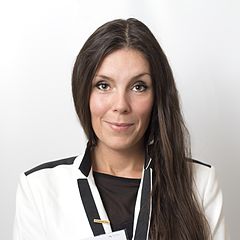 Magdalena Król, notka biograficzna
Magdalena Król, notka biograficzna
Profesor Magdalena Król urodziła się w Płocku. Jest lekarzem weterynarii, doktorem habilitowanym nauk weterynaryjnych, profesorem nadzwyczajnym Szkoły Głównej Gospodarstwa Wiejskiego w Warszawie oraz Kierownikiem Zakładu Fizjologii na Wydziale Medycyny Weterynaryjnej. W 2017 roku była profesorem wizytującym na Uniwersytecie „La Sapienza” w Rzymie. Zajmuje się onkologią eksperymentalną, szczególnie fascynują ją terapie komórkowe i wpływ układu immunologicznego na powstawanie przerzutów nowotworowych.
Odbyła liczne staże naukowe w Holandii, Belgii, Szwecji i USA. Jest laureatką wielu nagród m.in. Stypendium START FNP (2011 i 2012), Stypendium MNiSW dla wybitnych młodych naukowców (2012), Young Investigator Scholarship in Veterinary Medicine ufundowanej przez Pfizer Animal Health (2012), Nagród Naukowych POLITYKI w kategorii nauka (2013), stypendium habilitacyjnego L’Oreal i Unesco „Dla kobiet nauki” (2013). W 2014 r. została laureatką plebiscytu „Polacy z werwą”, a w 2017 „Człowiekiem roku 2016” w kategorii nauka w plebiscycie „Gazety Wyborczej”.
W ubiegłym roku otrzymała prestiżowy grant Europejskiej Rady ds. Badań (ERC). Dzięki niemu przez pięć lat zespół naukowców będzie realizował projekt badawczy mający na celu wyjaśnienie zjawiska biologicznego „TRAIN” odkrytego przez prof. Magdalenę Król, która chciałaby wykorzystać je w praktyce onkologicznej.
Gender Gap in Biotechnology - dr Natasza Kosakowska-Berezecka, dr Magdalena Żadkowska (University of Gdańsk, Poland)
Speaker: dr Natasza Kosakowska-Berezecka, dr Magdalena Żadkowska (University of Gdańsk, Poland)
Talk: Gender Gap in Biotechnology
Time: 1 December 2017, 9:00 am
Venue: Intercollegiate Faculty of Biotechnology, Abrahama 58, hall 042
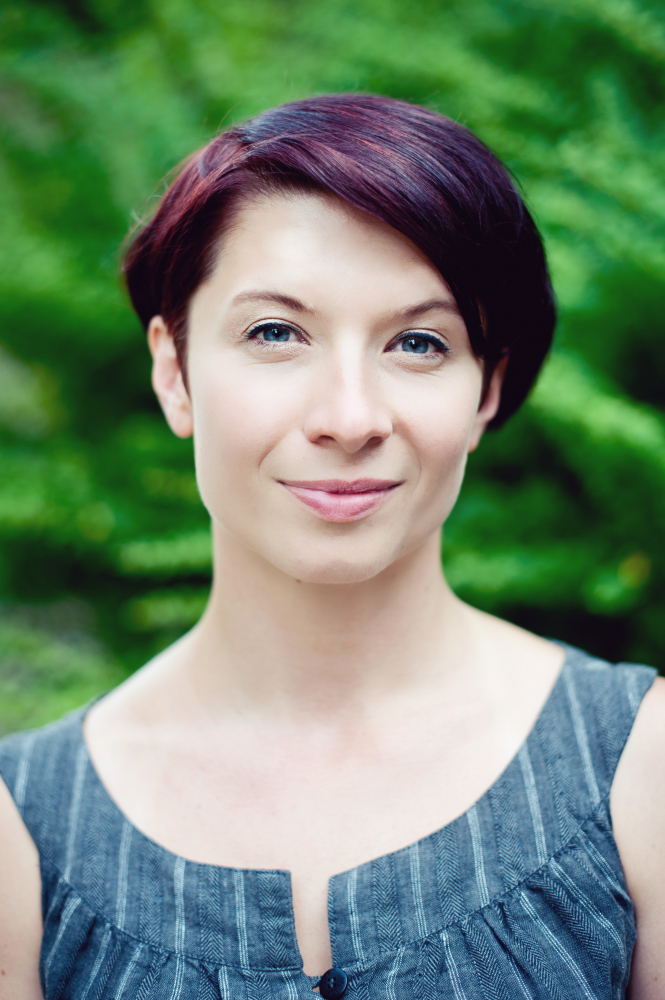 Natasza Kosakowska-Berezecka, notka biograficzna
Natasza Kosakowska-Berezecka, notka biograficzna
Tenerka umiejętności menedżerskich, wykładowczyni akademicka w Zakładzie Psychologii Międzykulturowej i Rodzaju w Instytucie Psychologii Uniwersytetu Gdańskiego; mediatorka oraz ekspertka ds różnorodności i równowagi praca-dom
Kierowniczka międzynarodowego konsorcjum badawczego PAR Migration Navigator (www.migrationnavigator.org)- WLB_GE "Socio-cultural and Psychological Predictors of Work-Life Balance and Gender Equality- Cross-Cultural Comparison of Polish and Norwegian Families".
Autorka i ekspertka ds. Programu oraz zaleceń organizacyjnych pomocy/ doradztwa personalnego dla kobiet i ich partnerów i Innowacyjnego programu oraz zaleceń organizacyjnych systemu szkoleń adaptacyjnych do pracy (model adaptacji do pracy) w projekcie "PI – Innowacyjny model godzenia przez kobiety życia zawodowego i rodzinnego" współfinansowanego ze środków Unii Europejskiej w ramach Europejskiego Funduszu Społecznego.
Trenerka nagrodzonego w konkursie na Dobre Praktyki EFS projektu szkoleniowego KiM Kobieta i Mężczyzna Liderami Pomorskich Przedsiębiorstw realizowanym przez Gdańską Fundację Kształcenia Menedżerów.
Ekspertka medialna: Gazeta Wyborcza, Radio Gdańsk, Polskie Radio "Trójka", Newsweek.
Współautorka i koordynatorka wdrażania Gdańskiego Modelu Integracji Migrantów, panel Edukacji Wyższej.
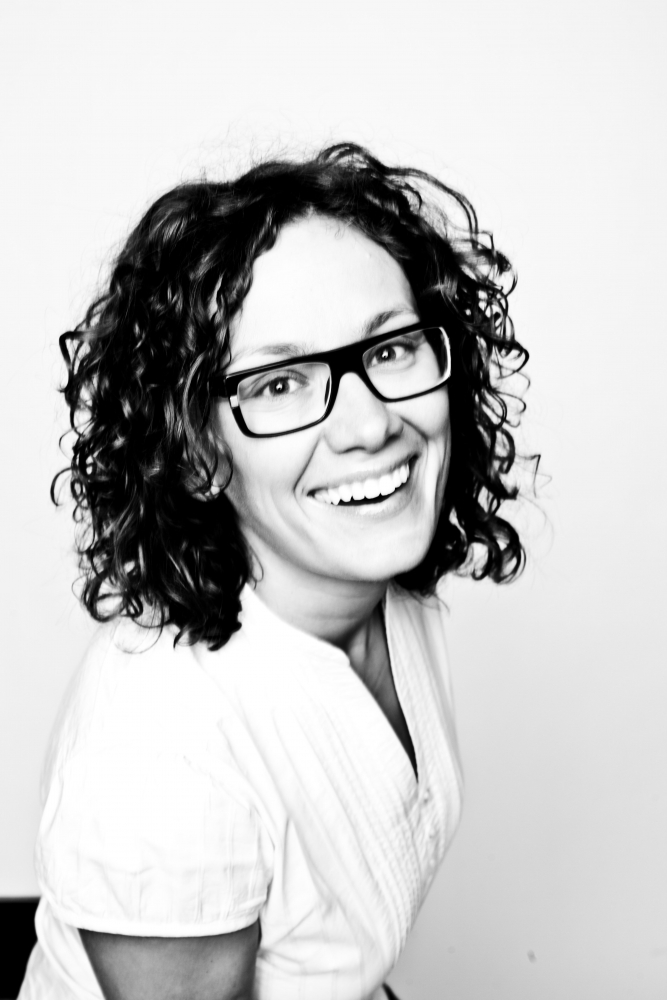 Magdalena Żadkowska, notka biograficzna
Magdalena Żadkowska, notka biograficzna
Pracuje jako adiunkt na Uniwersytecie Gdańskim; prowadzi zajęcia z Zarządzania projektami społecznymi, Komunikacji międzykulturowej, Zarządzania różnorodnością w organizacji i Komunikacji interpersonalnej.
Prowadzi zajęcia na studiach podyplomowych MBA: Zarządzanie różnorodnością, Metodologia projektu dyplomowego, Kierowanie zespołem.
Analizuje życie domowe i zawodowe par w Polsce i na migracji. Bada podział obowiązków i negocjowanie godzenia życia zawodowego z rodzinnym.
Ukończyła socjologię na Uniwersytecie Gdańskim i kulturoznawstwo na Uniwersytecie Jagiellońskim. Jest doktorem nauk humanistycznych w zakresie socjologii, obronionym na Uniwersytecie Mikołaja Kopernika w Toruniu. Ukończyła warsztat Kena Cushnera (nauczanie kompetencji kulturowych), ukończyła Szkołę Trenerów TROP (szkolenia oparte na empatii) i kurs trenerów Szkoły dla rodziców.
Rzeczniczka równouprawnienia i różnorodności, bardzo chętnie angażuje się w różnego rodzaju projekty upowszechniające naukę – jest trenerką biznesową, ekspertką medialną i autorką projektów społecznych.
Trenerka biznesowa, specjalistka ds. Komunikacji wewnętrznej, Komunikacji międzykulturowej, Zarządzania wartościami, Zarządzania wiekiem, Budowania zespołów, Godzenia życia zawodowego z rodzinnym i Wdrażania elastycznych form pracy.
Autorka i Koordynatorka merytoryczna nagrodzonego przez Ministerstwo Rozwoju Regionalnego w konkursie na Dobre Praktyki EFS 2011 projektu szkoleniowego KiM Kobieta i Mężczyzna Liderami i Liderkami Pomorskich Przedsiębiorstw (5 edycji).
Trenerka w projekcie KiM Kobieta i Mężczyzna Liderami i Liderkami Pomorskich Przedsiębiorstw.
Liderka badań socjologicznych w międzynarodowym konsorcjum badawczym PAR Migration Navigator (www.migrationnavigator.org)- WLB_GE "Socio-cultural and Psychological Predictors of Work-Life Balance and Gender Equality- Cross-Cultural Comparison of Polish and Norwegian Families".
Autorka metody szkoleń dla par z Godzenia życia zawodowego z rodzinnym.
Badaczka w projekcie "A więc siedzisz w domu, etnograficzne studium pracy wykonywanej z domu", grant Narodowego Centrum Nauki.
Autorka i ekspertka ds. Programu oraz zaleceń organizacyjnych pomocy/ doradztwa personalnego dla kobiet i ich partnerów i Innowacyjnego programu oraz zaleceń organizacyjnych systemu szkoleń adaptacyjnych do pracy (model adaptacji do pracy) w projekcie „PI – Innowacyjny model godzenia przez kobiety życia zawodowego i rodzinnego” współfinansowanego ze środków Unii Europejskiej w ramach Europejskiego Funduszu Społecznego.
Ekspertka w projekcie "7 kroków do Work-Life-Balance", organizowanego przez Pracodawców Pomorza.
Ekspertka medialna: Gazeta Wyborcza, Radio Gdańsk, Newsweek, TV4.
Wykładała na uczelniach polskich i zagranicznych.
Współautorka i koordynatorka wdrażania Gdańskiego Modelu Integracji Migrantów, panel Edukacji Wyższej.
Vascular injury accelerates the onset of ALS neurodegeneration: evidence from mouse models and patients.
Speaker: Sebastian Lewandowski PhD (Karolinska Institute, MBB, Stockholm, Sweden)
Talk: Vascular injury accelerates the onset of ALS neurodegeneration: evidence from mouse models and patients.
Time: 30 June 2017, 9 am
Venue: Intercollegiate Faculty of Biotechnology, Abrahama 58
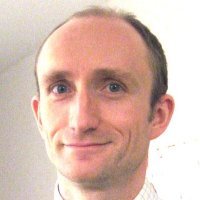
Efficient delivery of oxygen and nutrients is essential for correct brain function. Our studies focus on the mechanisms of vascular injury to explain dysfunction of the blood-brain barrier and decreased cerebral blood flow in patients with amyotrophic lateral sclerosis (ALS). We found that presymptomatic activation of the PDGFC pathway leads to dysfunction of the blood-brain barrier in ALS mouse models and is correlated with younger age at disease onset in mouse models and patients. Vascular injury also leads to dysfunction of the vascular basement membrane where perivascular astrocytes detach from cerebral blood vessels and increase expression of specific extracellular matrix proteins. We found that the increase of vascular basement membrane proteins in plasma of ALS patients is correlated with decreased levels of glucose brain uptake and younger age at disease onset. In summary our findings show that cerebral vessel injury can be a risk factor for young onset of ALS neurodegeneration.
Targeted therapy in mesenchymal diseases - preclinical drug testing in vivo
Speaker: Dr Agnieszka Wożniak (Leuven Cancer Institute, Belgium)
Talk: Targeted therapy in mesenchymal diseases - preclinical drug testing in vivo
Time: 26 May 2017, 9 am
Venue: Intercollegiate Faculty of Biotechnology, Abrahama 58
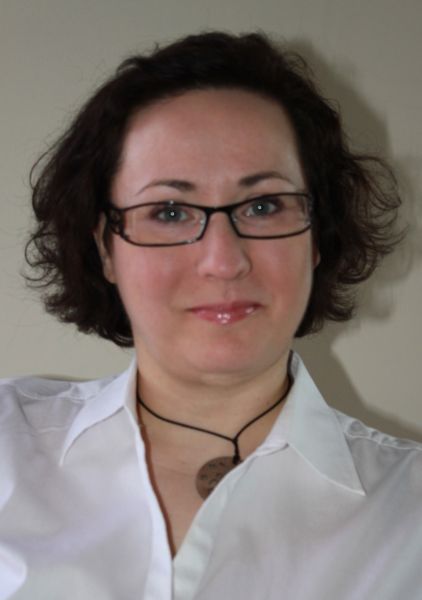
Dr Agnieszka Wozniak obtained her master degrees at the Faculty of Pharmacy, MUG (1996) and at the Intercollegiate Faculty of Biotechnology UG-MUG (1998). In 2001 she received her PhD in medical biology (specialization: medical genetics) at the Faculty of Medicine MUG. After a postdoctoral fellowship at the Department of Human Genetics, KU Leuven, she became a Research Manager at the Laboratory of Experimental Oncology, Department of Oncology, KU Leuven. She is a molecular biologist with a special interest in biology and treatment of mesenchymal tumors. For several years she was involved in routine molecular diagnostics of solid tumors including soft tissue sarcoma. She has expertise in the application of various molecular techniques for the sarcomas’ classification and the determination of prognostic and predictive biomarkers. Currently her research interests include pre-clinical studies of novel targeted therapies in sarcomas, especially using patient-derived xenograft models of soft tissue sarcoma. Moreover she is heavily involved in translational research, aimed at identifying molecular markers predicting patients’ response to the targeted treatment, where she applies “liquid biopsy” approach.
Mechanisms of RNA-directed DNA methylation
Speaker: dr Andrzej T. Wierzbicki (University of Michigan Department of Molecular, Cellular, and Developmental Biology (MCDB), USA)
Talk: Mechanisms of RNA-directed DNA methylation
Time: 22 May 2017, 15pm
Venue: Intercollegiate Faculty of Biotechnology, Abrahama 58
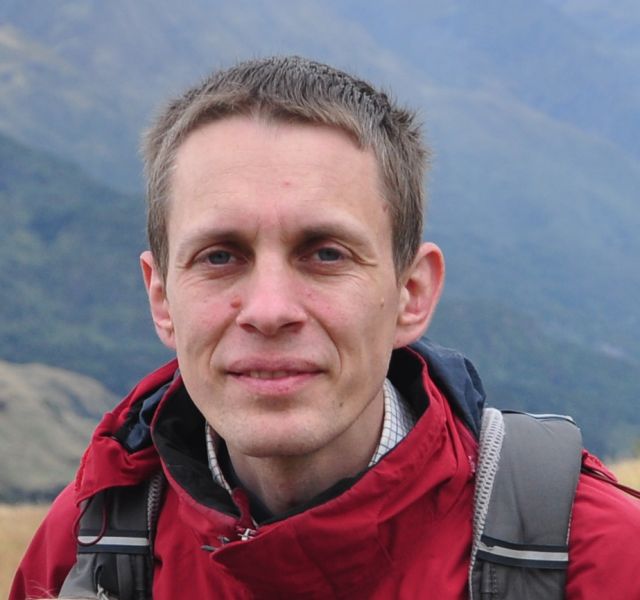
RNA-directed DNA methylation is a conserved process where small RNAs target transposons and other sequences for repression by establishing chromatin modifications. A central element of this process is long noncoding RNA (lncRNA) which has been proposed to serve as a binding scaffold for small RNAs and associated proteins. In Arabidopsis thaliana, this lncRNA is produced by a specialized RNA polymerase known as Pol V. Pol V transcripts serve as a binding scaffold for several RNA-binding proteins, which mediate the recruitment of chromatin modifying enzymes. These enzymes contribute to the repression of transposon activity and help determine the boundaries between heterochromatic transposons and their euchromatic environment. RNA-directed DNA methylation has also been implicated in controlling organization of chromosomes, which may explain how it affects expression of distant genes.
Otwarty dostęp do publikacji i danych naukowych
Speaker: dr Marta Hoffman-Sommer (Interdyscyplinarne Centrum Modelowania Matematycznego i Komputerowego Uniwersytetu Warszawskiego, Platforma Otwartej Nauki)
Talk: Otwarty dostęp do publikacji i danych naukowych
Time: 21 April 2017, 9.15am
Venue: Intercollegiate Faculty of Biotechnology, Abrahama 58
Category: Faculty seminar
Po wykładzie dyskusja panelowa z udziałem zaproszonych gości. Planowany czas trwania (9.15-11.00).
http://biotech.ug.edu.pl/media/aktualnosci/65077/otwarta_nauka_szanse_-_wyzwania_-_kierunki
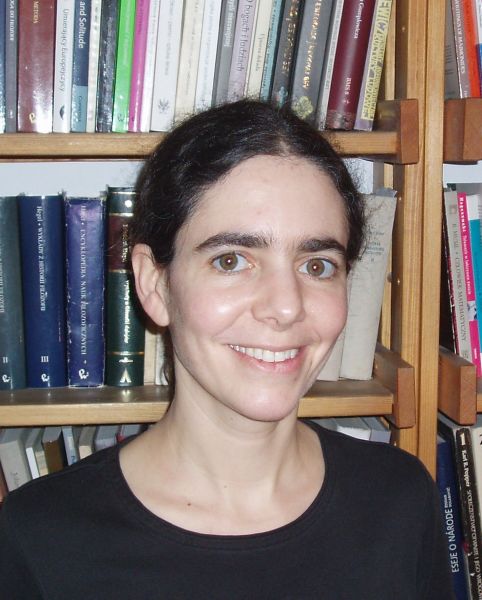
Marta Hoffman-Sommer jest absolwentką Międzywydziałowych Indywidualnych Studiów Matematyczno-Przyrodniczych na Uniwersytecie Warszawskim. Stopień doktora nauk biochemicznych (2007) uzyskała w Instytucie Biochemii i Biofizyki PAN w Warszawie na podstawie badań nad transportem wewnątrzkomórkowym u drożdży. Staż podoktorski odbyła na Uniwersytecie Humboldtów w Berlinie (2010-2012) w dziedzinie modelowania matematycznego w biologii. Od roku 2012 pracuje w Interdyscyplinarnym Centrum Modelowania Matematycznego i Komputerowego Uniwersytetu Warszawskiego, gdzie w ramach Platformy Otwartej Nauki zajmuje się kwestiami dotyczącymi otwartej nauki, otwartych danych badawczych i zarządzania danymi, koordynuje ogólnopolskie Repozytorium Otwartych Danych RepOD i reprezentuje Krajowe Biuro Otwartego Dostępu projektu OpenAIRE.
Forward genetic studies of gene essentiality and sporulation in Clostridium difficile
Speaker: dr Marcin Dembek (Institute for Cell and Molecular Biosciences, Newcastle University, UK)
Talk: Forward genetic studies of gene essentiality and sporulation in Clostridium difficile
Time: 24 March 2017, 9am
Venue: Intercollegiate Faculty of Biotechnology, Abrahama 58
Category: Faculty seminar
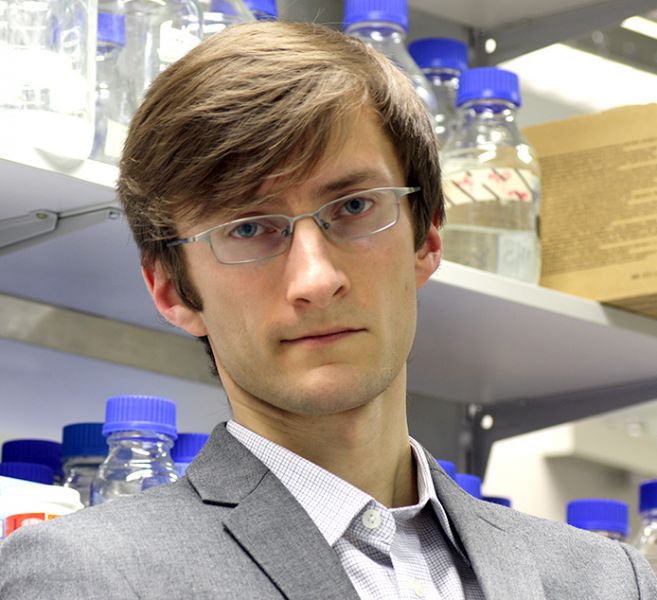
Marcin Dembek obtained his master’s degree in 2009 at the Intercollegiate Faculty of Biotechnology UG-MUG while studying the potential application of B. subtilis spores as an antigen delivery platform for use in the development of an oral vaccine against Helicobacter pylori. He went on to secure a Wellcome Trust PhD scholarship at Imperial College London to develop genome-wide approaches to studying sporulation and germination in Clostridium difficile. In 2013, he took up a post-doctoral position at the Jenner Institute, University of Oxford to work on the development of novel vaccine candidates against malaria before being offered a research associate position in Dr. Paula Salgado’s lab at Newcastle University where he studies the structure and function of potential drug targets in C. difficile. His current work is primarily aimed at understanding the organisation of the ‘molecular machinery’ involved in the engulfment stage of sporulation.
Dr Dembek is a member of the Microbiology Society and an active part of the Polish scientific community in the UK. In 2014, he co-founded Getty Science, an online publication platform aimed at researcher who wish to share their work through creative writing and illustration, as part of a close collaboration with the annual ‘Science. Polish Perspectives’ meeting.
Inflammatory signalling from the endocytic pathway
Speaker: prof. dr hab. Marta Miączyńska (Międzynarodowy Instytut Biologii Molekularnej i Komórkowej w Warszawie)
Talk: Inflammatory signalling from the endocytic pathway
Time: 20 January 2017
Venue: Intercollegiate Faculty of Biotechnology, Abrahama 58
Category: Faculty seminar
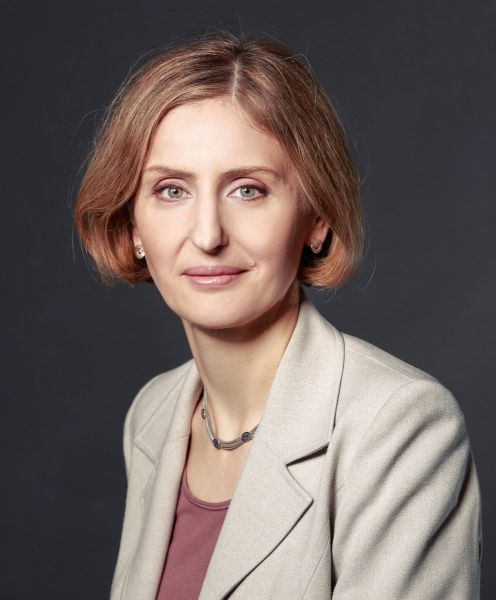 Absolwentka Uniwersytetu Jagiellońskiego (kierunek biologia molekularna, 1992), uzyskała stopień doktora w dziedzinie genetyki na Uniwersytecie Wiedeńskim w 1997 roku. Odbyła staże podoktorskie w Europejskim Laboratorium Biologii Molekularnej w Heidelbergu (1998-2000) oraz w Instytucie Maxa Plancka Molekularnej Biologii Komórki i Genetyki w Dreźnie (2001-2004). Od roku 2005 kierownik Laboratorium Biologii Komórki w Międzynarodowym Instytucie Biologii Molekularnej i Komórkowej w Warszawie. Stopień doktora habilitowanego uzyskała w roku 2008, a tytuł profesora w 2013.
Absolwentka Uniwersytetu Jagiellońskiego (kierunek biologia molekularna, 1992), uzyskała stopień doktora w dziedzinie genetyki na Uniwersytecie Wiedeńskim w 1997 roku. Odbyła staże podoktorskie w Europejskim Laboratorium Biologii Molekularnej w Heidelbergu (1998-2000) oraz w Instytucie Maxa Plancka Molekularnej Biologii Komórki i Genetyki w Dreźnie (2001-2004). Od roku 2005 kierownik Laboratorium Biologii Komórki w Międzynarodowym Instytucie Biologii Molekularnej i Komórkowej w Warszawie. Stopień doktora habilitowanego uzyskała w roku 2008, a tytuł profesora w 2013.
Jej badania z dziedziny biologii komórki dotyczą mechanizmów molekularnych, które integrują transport błonowy, w szczególności endocytozę, z wewnątrzkomórkowymi szlakami sygnalizacyjnymi. Odkryła m. in. odrębną populację wczesnych endosomów w komórce, tzw. endosomy APPL. Wraz ze swoim zespołem scharakteryzowała nowe funkcje białek endocytarnych w regulacji przekazywania sygnałów oraz transkrypcji, a także rolę endosomów jako platform sygnałowych dla receptorów czynników wzrostu i cytokin.
Współautorka ponad 40 publikacji cytowanych ponad 2100 razy. Wygłosiła kilkadziesiąt referatów i wykładów na zaproszenie na międzynarodowych konferencjach oraz w zagranicznych instytucjach naukowych. Laureatka stypendiów Austrian Science Fund (FWF), Human Frontier Science Program Organization (HFSPO) oraz L’Oreal Polska dla Kobiet i Nauki. Laureatka prestiżowych grantów zagranicznych: Wellcome Trust International Senior Research Fellowship (2006-2012) oraz Howard Hughes Medical Institute International Research Scholar (2006-2010). Kierowniczka grantów finansowanych przez Polsko-Szwajcarski Program Badawczy, Narodowe Centrum Nauki (grant MAESTRO), Unię Europejską, Towarzystwo Maxa Plancka i Ministerstwo Nauki i Szkolnictwa Wyższego. Panelistka m. in. European Research Council (LS3 starting grants), Agence Nationale de la Recherche (ANR) z Francji, Deutsche Forschungsgemeinschaft (DFG) z Niemiec. Członek Komitetu Biologii Molekularnej Komórki PAN. Promotorka 7 zakończonych przewodów doktorskich.
Structural basis of DNA replication and repair in human mitochondria
Speaker: dr Michał R. Szymański
Talk: Structural basis of DNA replication and repair in human mitochondria
Time: 13 January 2017, 10am
Venue: Intercollegiate Faculty of Biotechnology, Abrahama 58
Category: Faculty seminar
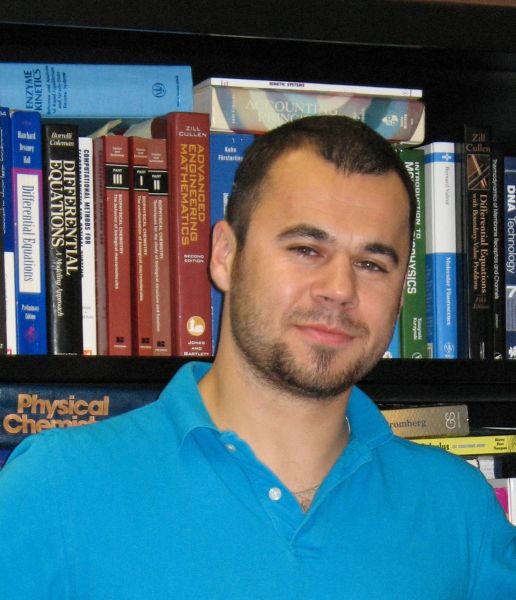
Culture of Innovation; Practitioner’s Perspective
Speaker: dr hab. Mieczyslaw (Mietek) Mazurek
Talk: Culture of Innovation; Practitioner’s Perspective
Time: 13 January 2017, 9.00 a.m.
Venue: Intercollegiate Faculty of Biotechnology, Abrahama 58
Category: Faculty seminar
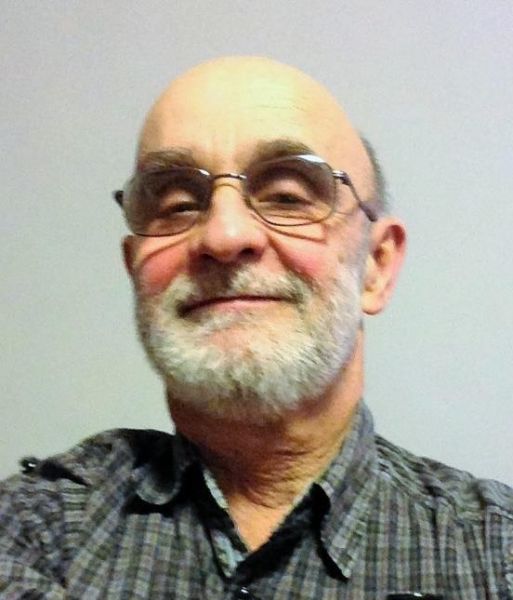
Culture of Innovation; Practitioner’s Perspective - What is true in science: “publish or perish”, in the market place translates into: “innovate or die”. Innovation is one of the key tools necessary to win in the competitive economies; innovation not only in technology, but also in processes and business models. This seminar will combine some examples and general remarks from literature regarding the subject matter with examples and observations of a researcher immersed in the creative environment of one of the most innovative global enterprises – 3M Company. A need for “systems thinking” in designing and implementing truly innovative solutions will be emphasized.
Rabbit Pluripotent Stem Cells: Interest and State of Art.
Linking viral immune evasion with cell proliferation - Epstein-Barr virus encoded EBNA1
Speaker: Prof. Robin Fahraeus (Inserm, Universit Paris)
Talk: Linking viral immune evasion with cell proliferation - Epstein-Barr virus encoded EBNA1
Time: 7 October 2016
Venue: Intercollegiate Faculty of Biotechnology, Abrahama 58
Category: Faculty seminar
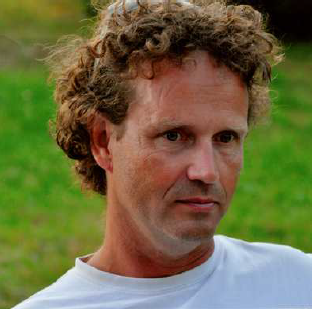
Prof. Robin Fahraeus is Director of Research at the French Inserm. His team is located at the Institute Genetique Moleculair in Paris. He is member of the French Cancer Institute, the Mazaryk Cancer Institute in Brno, Czech Republic and Umea University, Sweden. He did his M.D. and PhD at the Karolinska Institute in Stockholm, Sweden in 1993. This was followed by a post doc training with Sir David Lane in Dundee, UK. He was Head of R&D at the Cyclacel Biotech Ltd before setting up his own academic research group with support from the Cancer Research UK. In 2004 he moved to France to become Research Director and work on physiological implications of mRNA translation in the p53 and the MHC class I pathways. The team has explored viral mechanisms of immune evasion and how this is linked to alternative sources of peptides for the MHC class I pathway. Works on the activation of p53 have shown how signaling pathways use the p53 mRNA to differentiate p53 activity following different cellular stresses. Dr Fahraeus team is currently world leading group in the studies on the source of MHC class I presented peptides. Their work contributed to understanding fundamental aspects of the processes allowing the immune system to detect self from non-self and for viral evasion of the immune system. The aim of their present research is to identify and evaluate intracellular targets for novel anti-cancer therapies. Dr Fahraeus is the author of over 80 publications in leading scientific journals, including Science, Nature, Nature Communications, PNAS, Oncogene and others.
Wykład inauguracyjny 2016/2017 "Składanie pre-mRNA – molekularna gra w Scrabble" Prof. dr hab. Zofia Szweykowska-Kulińska
Speaker: Prof. dr hab. Zofii Szweykowska-Kulińska (Uniwersytet Adama Mickiewicza Poznań)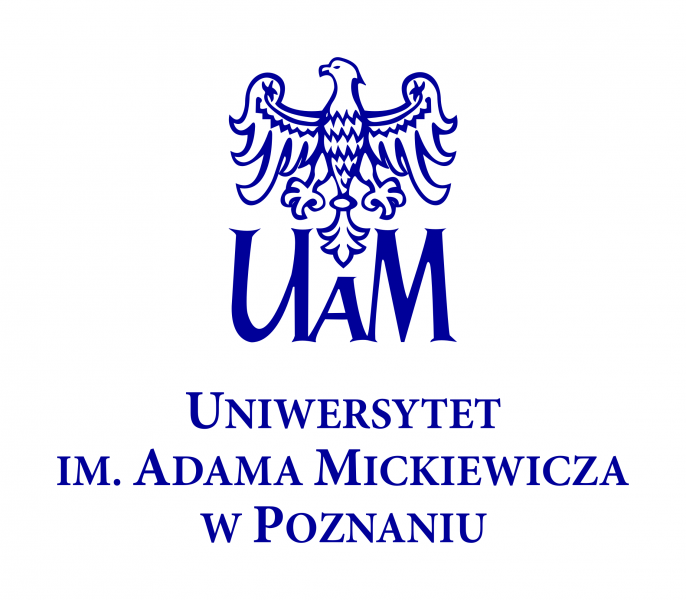
Talk: Składanie pre-mRNA - molekularna gra w Scrabble
Time: 5 October 2016, 12:00
Venue: Intercollegiate Faculty of Biotechnology, Abrahama 58, Aula
Category: Invited Lecture, Inauguration of the academic year
Serdecznie zapraszamy na wykład Prof. dr hab. Zofii Szweykowskiej-Kulińskiej z Uniwersytetu Adama Mickiewicza w Poznaniu "Składanie pre-mRNA – molekularna gra w Scrabble". Wykład uhonoruje tegoroczną inaugurację roku akademickiego, która odbędzie 5 pażdziernika o 1200 w Auli na MWB, Instytut Biotechnologii Abrahama 58.
Tytuł magistra: 1980 biologii, UAM Stopień doktora nauk biologicznych: 1986, UAM Stopień doktora habilitowanego nauk biologicznych: 1995, UAM Tytuł profesora nauk biologicznych: 2001, UAM
Postdok: stypendium Aleksandra von Humboldta: 1988-1990, Uniwersytet w Wuerzburgu, Niemcy Stypendium EMBO, 1993, CNRS, Gif-sur Yvette, Francja
Kierownik Zakładu Ekspresji Genów (od 1996) Dyrektor Instytutu Biologii Molekularnej i Biotechnologii (od 2000) na Wydziale Biologii UAM Blisko 70 prac widocznych w WoS
Tematyka: Badania dotyczą metabolizmu RNA, obecnie koncentrują się nad splicingiem i biogenezą i funkcjami mikroRNA roślin. Najważniejsze odkrycia: (1) odkryła wraz ze współpracownikami, że geny mikroRNA są długie i zawierają introny. (2) Intron lub aktywne miejsce 5’ splicingowe stymuluje biogenezę roślinnych mikroRNA obecnych w egzonie powyżej intronu, natomiast w przypadku intronowych mikroRNA jest odwrotnie: wydajny splicing i aktywne miejsce 5’ splicingowe hamują biogenezę mikroRNA . (3) Wyciszenie z pomocą sztucznego mikroRNA genu CBP80 ziemniaka zwiększa tolerancję rośliny na okresowy niedobór wody. (4) Zahamowanie krzewienia jęczmienia w stresie wysokiej temperatury jest związane z indukcją mikroRNA 444. (5) W wątrobowcu P.endiviifolia odkryto obecność kilku mikroRNA podobnych do mikroRNA glonów. Fakt ten wskazuje, że rośliny te lokują się u korzenia drzewa filogenetycznego roślin lądowych.
Role of the complement system in cancer progression and therapy
Speaker: Marcin Okrój, PhD
Talk: Role of the complement system in cancer progression and therapy.
Time: 26 February 2016, 9.00
Venue: Intercollegiate Faculty of Biotechnology, Abrahama 58
Category: Faculty seminar
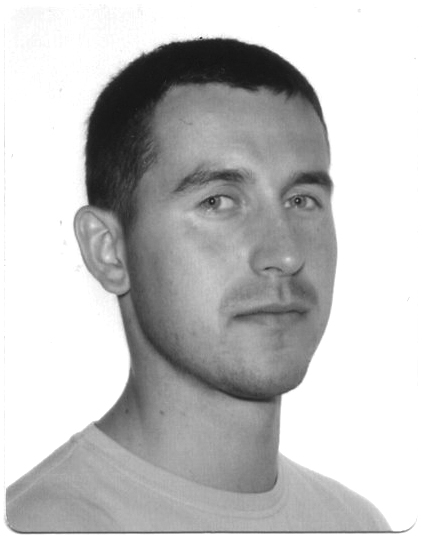 Marcin Okrój obtained his master degree at the Intercollegiate Faculty of Biotechnology UG-AMG (Gdańsk, Poland) in 1999, then continued his scientific career at the same place as a PhD student under the supervision of prof. Jacek Bigda. He participated in two projects granted by Polish State Commitee for Scientific Research (KBN), which involved the role of cell adhesion as well as antiangiogenic compound TNP-470 in growth of rodent melanomas. Irrespectively of the main scientific activity, he was also involved in several side-projects concerning antimicrobial peptides. In 2003, as a beneficient of Marie-Curie Program, he obtained 6-month training at the Free University of Amsterdam (Amsterdam, The Netherlands) and finally defended his PhD thesis in 2004.
Marcin Okrój obtained his master degree at the Intercollegiate Faculty of Biotechnology UG-AMG (Gdańsk, Poland) in 1999, then continued his scientific career at the same place as a PhD student under the supervision of prof. Jacek Bigda. He participated in two projects granted by Polish State Commitee for Scientific Research (KBN), which involved the role of cell adhesion as well as antiangiogenic compound TNP-470 in growth of rodent melanomas. Irrespectively of the main scientific activity, he was also involved in several side-projects concerning antimicrobial peptides. In 2003, as a beneficient of Marie-Curie Program, he obtained 6-month training at the Free University of Amsterdam (Amsterdam, The Netherlands) and finally defended his PhD thesis in 2004.
After working for 1 year at Pasteur Institute (Paris, France), Dr Okrój joined the team of prof. Anna Blom at Lund University (Malmö, Sweden), which was engaged into innate immunity and especially the complement system. In 2010 he obtained support from Swedish Research Council (Vetenskapsrådet) and initiated an independent line of research focused on the role of complement in tumor progression, identification of novel complement inhibitors and design of new immunological methods.
Currently Dr Okrój is a principal investigator within two projects funded by National Science Centre (NCN, Poland): i) ¨Role of the complement system in tumorigenesis and therapeutic approaches.¨ (Sonata Bis) and ii) ¨Functional characteristics and therapeutic potential of gain-of-function mutations in complement C2 protein.¨ (Harmonia). He is the author of 30 peer-reviewed publications and named as inventor in one patent. Dr Okrój is a member of International Complement Society, European Complement Network and research program Biomarkers in Cancer Medicine (BioCare).
Filaggrin utilize actins to regulate keratinocyte differentiation and cornification during epidermal barrier formation - Danuta Gutowska-Owsiak
Speaker: Danuta Gutowska-Owsiak, PhD
Talk: Filaggrin utilize actins to regulate keratinocyte differentiation and cornification during epidermal barrier formation
Time: 22 January 2016, 9:00
Venue: Intercollegiate Faculty of Biotechnology, Kładki 24, lecture hall B
Category: Invited Seminar
Mikhail I. Zarayskiy (First Pavlov State Medical University of Saint Petersburg, Russia)
Speaker: Prof. Mikhail I. Zarayskiy (Clinical Laboratory, First Pavlov State Medical University of Saint Petersburg, Russia)
Talk: The modern concept of the DNA structure and regulation
Time: 23 October 2015, 9:00
Venue: Intercollegiate Faculty of Biotechnology, Kładki 24, lecture hall B
Category: Invited Seminar
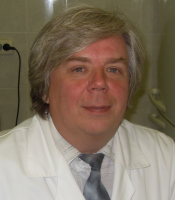 Mikhail I. Zarayskyi is professor of Clinical Laboratory at the First Pavlov State Medical University of Saint Petersburg in Russia. Hi is a group leader ‘Molecular Diagnostics in Oncology’. He graduated in medicine in 1984 at Saint-Petersburg Medical Institute of Hygiene and Sanitation. Then he obtained PhD degree for research on ‘The role of HLA markers in prognosis of multiple myeloma’ (1985) and ‘Molecular aspects of the main complications in hemopoietic stem cell transplantation’ (1995). His research interests focus primarily on molecular and genetic aspects of oncogenesis (telomerase activity, mutagenesis in the apoptotic genes (p53, p21, BCL-2), intracellular signaling (Jak, HOX, STAT), allogenic bone marrow transplantation, renal transplantation and micro-RNA control of tumor cells. He is currently a member of the European Dialysis and Transplant Association.
Mikhail I. Zarayskyi is professor of Clinical Laboratory at the First Pavlov State Medical University of Saint Petersburg in Russia. Hi is a group leader ‘Molecular Diagnostics in Oncology’. He graduated in medicine in 1984 at Saint-Petersburg Medical Institute of Hygiene and Sanitation. Then he obtained PhD degree for research on ‘The role of HLA markers in prognosis of multiple myeloma’ (1985) and ‘Molecular aspects of the main complications in hemopoietic stem cell transplantation’ (1995). His research interests focus primarily on molecular and genetic aspects of oncogenesis (telomerase activity, mutagenesis in the apoptotic genes (p53, p21, BCL-2), intracellular signaling (Jak, HOX, STAT), allogenic bone marrow transplantation, renal transplantation and micro-RNA control of tumor cells. He is currently a member of the European Dialysis and Transplant Association.
Luis M. Schang (Li Ka Shing Institute of Virology, University of Alberta, Canada)
Speaker: Dr. Luis M. Schang (Li Ka Shing Institute of Virology, University of Alberta, Canada)
Talk: Chromatin silencing as an antiviral innate immune response
Time: Friday, 2015-10-16, 9:00
Venue: Intercollegiate Faculty of Biotechnology, Kładki 24, lecture hall B
Category: Invited Seminar
Luis M. Schang, biographical note
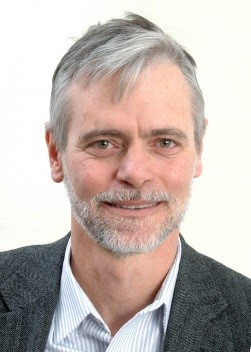
Dr. Luis M. Schang is a Professor at the Department of Biochemistry of the Faculty of Medicine and Dentistry of the University of Alberta, cross-appointed to the Department of Medical Microbiology and Immunology. He is also a founding member of the Li Ka Shing Institute of Virology and a founding member and president of ProPhysis, Ltd. He is the director of the MD with Special Training in Research (MD-STIR) program. Dr. Schang is an active member of the International Society for Antiviral Research (ISAR) and the International Herpesvirus Workshop (IHW). He is a section editor for PLOS ONE, a member of the editorial boards of two of the official publications of the American Society for Microbiology (ASM), the Journal of Virology, and Antimicrobial Agents and Chemotherapy, and an associate editor of Virology Journal. He also reviews papers for a number of high-impact scientific publications. He is a permanent or ad hoc member of grant review panels of the Canadian Institutes of Health Research (CIHR), the National Institute of Health, USA (NIH), and a number of other International granting agencies. His research interests are centered in chemical virology, the use of small chemical probes to interrogate virus-infected cells to identify factors required for viral replication and leads toward the development of new antiviral drugs. His group discovered the first lipid-targeting antiviral compounds and spearheaded the study of chromatin dynamics and epigenetics in lytic HSV infections, playing a critical role in our current understanding of the roles of chromatin as an antiviral innate cellular defense. Previously, Dr. Schang had identified the roles of the cellular cyclin-dependent kinases in viral replication and pathogenesis, and championed the use of inhibitors of cellular protein kinases against virus-induced cancers. He has been continuously funded by Canadian and American sources since 2001. Dr. Schang has published 60 original research, review or editorial articles or book chapters and holds four issued patents on novel antivirals.
Zbigniew Arent DVM, PhD, MRCVS
Speaker: Zbigniew Arent DVM, PhD, MRCVS
Talk: Aspects of immunity in bovine leptospirosis
Time: 12 June, 2015, 9:00
Venue: Intercollegiate Faculty of Biotechnology, Kładki 24, lecture hall B
Category: Invited Seminar
Zbigniew Arent, biographical note
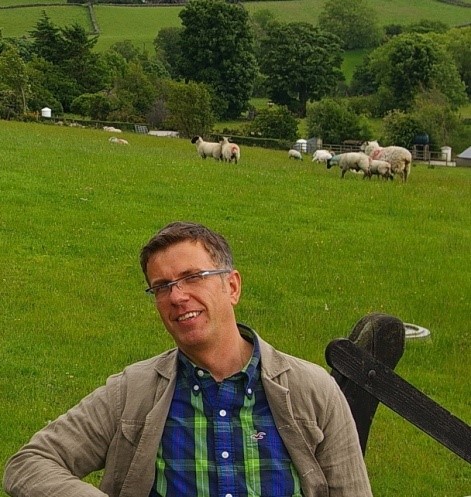 Qualified as veterinary surgeon from the Faculty of Veterinary Medicine in Olsztyn in 1993. Following his graduation he has spent much of his career in infectious disease science and research. He completed a PhD in veterinary microbiology in 2000 for studies on improvement of diagnostic methods of ram epididymitis caused by Brucella ovis. During his postdoctoral position he started his interests on leptospirosis. In 2007 he moved to Northern Ireland where he joined OIE Leptospirosis Reference Laboratory in AFBI, one of the essential in leptospirosis laboratories in Europe. The mission of his work is to improve the recognition and control of leptospirosis of animals. He is interested in host responses to infection as it relate to serological diagnosis, vaccinal immunity in domestic animals, molecular tools used to improve diagnosis and strains typing methods.
Qualified as veterinary surgeon from the Faculty of Veterinary Medicine in Olsztyn in 1993. Following his graduation he has spent much of his career in infectious disease science and research. He completed a PhD in veterinary microbiology in 2000 for studies on improvement of diagnostic methods of ram epididymitis caused by Brucella ovis. During his postdoctoral position he started his interests on leptospirosis. In 2007 he moved to Northern Ireland where he joined OIE Leptospirosis Reference Laboratory in AFBI, one of the essential in leptospirosis laboratories in Europe. The mission of his work is to improve the recognition and control of leptospirosis of animals. He is interested in host responses to infection as it relate to serological diagnosis, vaccinal immunity in domestic animals, molecular tools used to improve diagnosis and strains typing methods.
Frank Graage (Steinbeis-Forschungszentrum Technologie-Management Nordost, Germany)
Speaker: Frank Graage (Steinbeis-Forschungszentrum Technologie-Management Nordost, Germany)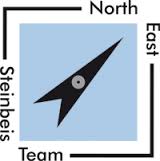
Talk: Motivation to get engaged with Horizon 2020 for scientists. Why and when participate - a realistic view to make the decision
Time: 29 May, 2015, 9:00
Venue: Intercollegiate Faculty of Biotechnology, Kładki 24, lecture hall B
Category: Invited Lecture
Frank Graage, biographical note
Frank Graage (Steinbeis Team Northeast) - Expert on EU proposal preparation and management in Life Sciences, EU-Evaluator
Niki Karachaliou (Catalan Institute of Oncology, Badalona, Barcelona, Spain)
Speaker: Dr. Niki Karachaliou (Catalan Institute of Oncology (ICO) – Badalona, Barcelona, Spain)
Talk: Integrated research in STAT3 in cancer stem cells. Early adaptive resistance to EGFR inhibition in EGFR mutant Non-Small-Cell-Lung-Cancer
Time: 27 March, 2015, 9:00
Venue: Intercollegiate Faculty of Biotechnology, Kładki 24, lecture hall B
Category: Invited Seminar
Niki Karachaliou, biographical note
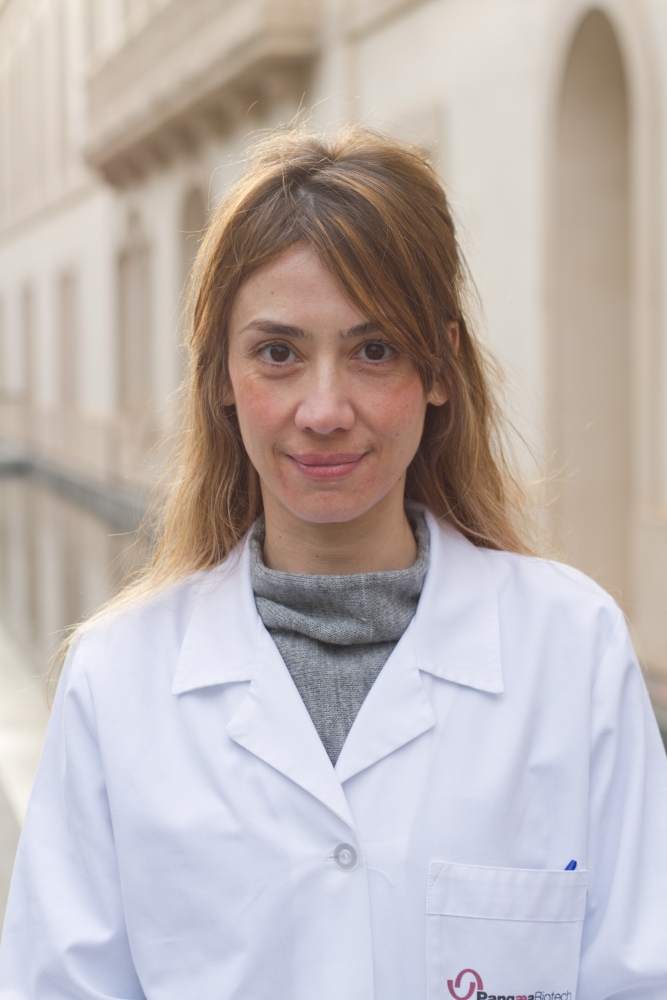 Dr Niki Karachaliou is a medical oncologist and member of the Translational Research Unit of the Instituto Oncológico Dr Rosell in Barcelona. She completed her graduate studies at the University of Athens Medical School (1994-2002) and achieved a score of 9 (maximum possible 10). She completed a three-year residency in internal medicine, including six months in hematology, and a second three-year residency in medical oncology at the University Hospital of Heraklion, Crete, Greece (2005-2011). In 2012, she was accepted as a translational research fellow under the mentorship of world-renowned medical oncologist and translational researcher Dr Rafael Rosell in Barcelona, Spain.
Dr Niki Karachaliou is a medical oncologist and member of the Translational Research Unit of the Instituto Oncológico Dr Rosell in Barcelona. She completed her graduate studies at the University of Athens Medical School (1994-2002) and achieved a score of 9 (maximum possible 10). She completed a three-year residency in internal medicine, including six months in hematology, and a second three-year residency in medical oncology at the University Hospital of Heraklion, Crete, Greece (2005-2011). In 2012, she was accepted as a translational research fellow under the mentorship of world-renowned medical oncologist and translational researcher Dr Rafael Rosell in Barcelona, Spain.
Innovations in environmental friendly productions of lipids and proteins for industry
Speakers: Prof. Ivo Feussner, University of Gottingen; Prof. Roman Zubarev, Karolinska Institute; Dr Andreas Marquardt, University of Konstanz; Dr Michal Sharon, Weizmann Institute of Science; Dr Piotr Stefanowicz, University of Wroclaw; Cyrus Papan, Sciex;
Topic: Innovations in environmental friendly productions of lipids and proteins for industry
Time: 18 March 2015
Venue: Intercollegiate Faculty of Biotechnology, Kładki 24, lecture hall B
Category: Open lecture session
Open session organized within the MOBI4Health project during the workshop focusing on application of mass spectrometry in biological science. The main subject of the workshop is “Innovations in environmental friendly productions of lipids and proteins for industry”.
Monika Słomińska-Wojewódzka (University of Gdańsk, Poland)
Speaker: Dr Monika Słomińska-Wojewódzka (University of Gdańsk, Poland)
Topic: Substrate specificity of the endoplasmic reticulum chaperone proteins EDEM1 and EDEM2, and their role in the intracellular transport of ricin [abstract in PDF]
Time: 13 March, 2015, 9:00
Venue: Intercollegiate Faculty of Biotechnology, Kładki 24, lecture hall B
Category: Invited seminar
Monika Słomińska-Wojewódzka, biographical note
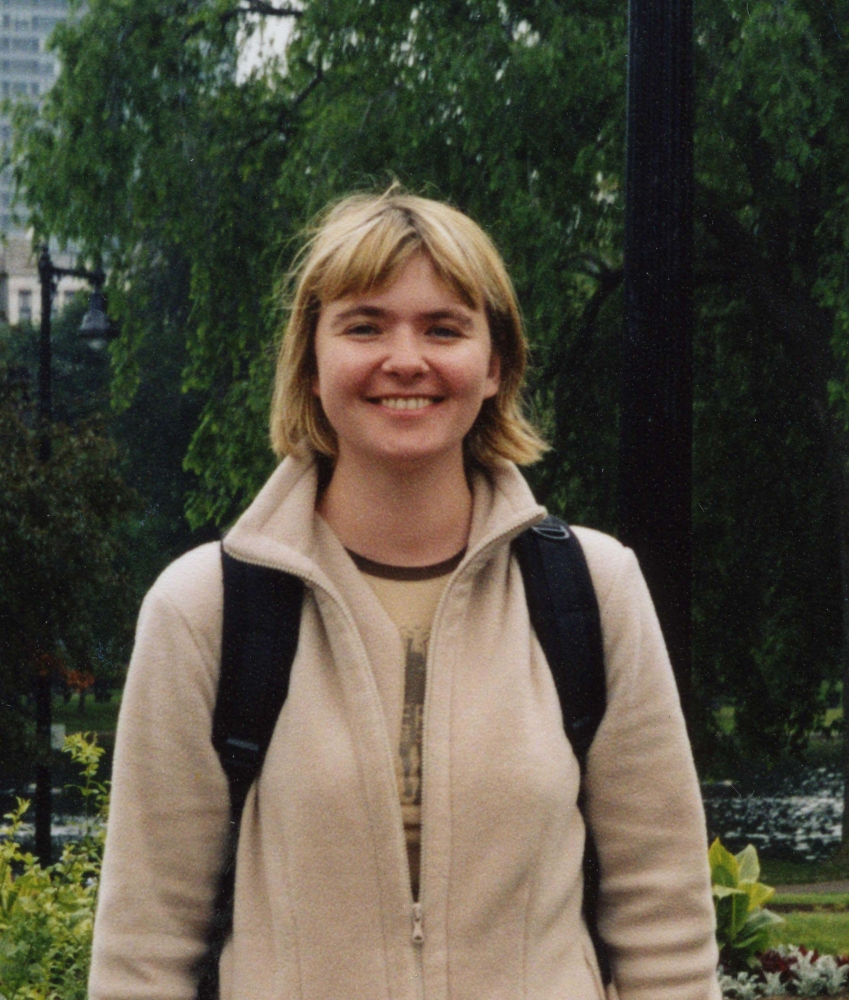 Monika Słomińska-Wojewódzka studied Biotechnology at the Intercollegiate Faculty of Biotechnology, University of Gdańsk and Medical University of Gdańsk. She obtained her PhD in molecular biology at the Faculty of Biology, Geography and Oceanology, University of Gdańsk in 2003 working in the field of bacteriophage genetics. In 2003-2005 she worked as a postdoctoral fellow at the Department of Biochemistry, Institute for Cancer Research, The Norwegian Radium Hospital, Oslo, Norway. Her scientific interests focused on the intracellular transport of ricin, a protein toxin. This fellowship was financed by the European Molecular Biology Organisation (EMBO long-term fellowship). Currently, she works at the Laboratory of Cell Signaling at the Department of Molecular Biology, University of Gdańsk. The main objectives of her research interests involve investigation of the role of endoplasmic reticulum (ER) chaperone proteins and ER translocons in protein transport to the cytosol and detailed analysis of ricin cytotoxic effect on different cancer cell lines.
Monika Słomińska-Wojewódzka studied Biotechnology at the Intercollegiate Faculty of Biotechnology, University of Gdańsk and Medical University of Gdańsk. She obtained her PhD in molecular biology at the Faculty of Biology, Geography and Oceanology, University of Gdańsk in 2003 working in the field of bacteriophage genetics. In 2003-2005 she worked as a postdoctoral fellow at the Department of Biochemistry, Institute for Cancer Research, The Norwegian Radium Hospital, Oslo, Norway. Her scientific interests focused on the intracellular transport of ricin, a protein toxin. This fellowship was financed by the European Molecular Biology Organisation (EMBO long-term fellowship). Currently, she works at the Laboratory of Cell Signaling at the Department of Molecular Biology, University of Gdańsk. The main objectives of her research interests involve investigation of the role of endoplasmic reticulum (ER) chaperone proteins and ER translocons in protein transport to the cytosol and detailed analysis of ricin cytotoxic effect on different cancer cell lines.
Peter Gimeson (Malvern Instruments Ltd.)
Speaker: Peter Gimeson (Malvern Instruments Ltd.)
Talk: Managing heat and disorder, calorimetric assays in life sciences [abstract, PDF]
Time: 6 March, 2015, 9:00
Venue: Intercollegiate Faculty of Biotechnology, Kładki 24, lecture hall B
Category: Invited Seminar
Peter Gimeson, biographical note
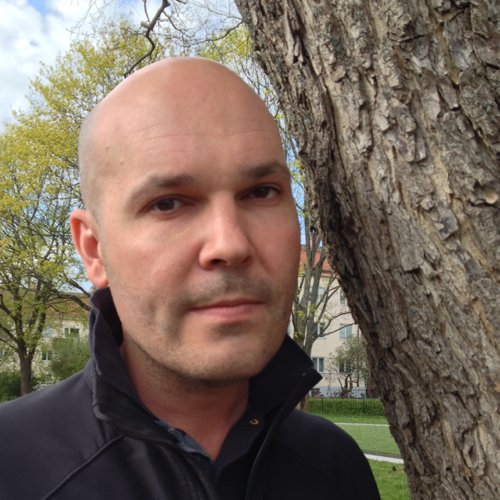 Peter joined Malvern Instruments Ltd 2014 in connection to the acquisition of MicroCal from GE Healthcare. Prior that, Peter worked at GE healthcare, Life sciences as senior application specialist for microcalorimetry covering Europe, Middle East and Africa. The function allows him to interact with users on a daily basis regarding all aspects of instrumentation, assay developments and data analysis in Isothermal Titration Calorimetry and Differential Scanning Calorimetry. He is based in Uppsala, Sweden. The role includes working closely with MicroCal R&D, service and Instrument user groups in both academic and industrial environments. A large part of his work is conducting training sessions, support visits and data analysis consultancy on/off site. Peter holds a Ba in Chemistry, Umeå University, Sweden
Peter joined Malvern Instruments Ltd 2014 in connection to the acquisition of MicroCal from GE Healthcare. Prior that, Peter worked at GE healthcare, Life sciences as senior application specialist for microcalorimetry covering Europe, Middle East and Africa. The function allows him to interact with users on a daily basis regarding all aspects of instrumentation, assay developments and data analysis in Isothermal Titration Calorimetry and Differential Scanning Calorimetry. He is based in Uppsala, Sweden. The role includes working closely with MicroCal R&D, service and Instrument user groups in both academic and industrial environments. A large part of his work is conducting training sessions, support visits and data analysis consultancy on/off site. Peter holds a Ba in Chemistry, Umeå University, Sweden
Tim Maisch (University Hospital Regensburg, Germany)
Speaker: Dr. Tim Maisch, PhD (University Hospital Regensburg, Germany)
Talk: A new trend against Superbugs: The Photodynamic Principle [abstract in PDF]
Time: 20 February, 2015, 9:00
Venue: Intercollegiate Faculty of Biotechnology, Kładki 24, lecture hall B
Category: Invited Lecture
Tim Maisch, biographical note
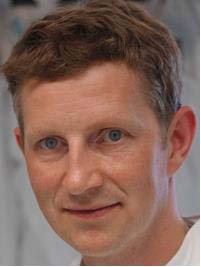 Tim Maisch studied Biology at the University of Erlangen-Nuremberg, Germany. He gained extensive laboratory experience working under the guidance of Prof. Dr. M. Mach at the Institute of Clinical and Molecular Virology, Univ. of Erlangen-Nuremberg. In 1997 he received his diploma and achieved his Ph.D. with a thesis titled "Upregulation of protein expression on endothelial cells infected with human cytomegalovirus” in 2001. Since 2002, he has been working as postdoctoral fellow at the Department of Dermatology, University Hospital of Regensburg on photodynamic inactivation of multi-resistant bacteria. He gained his Postdoctoral Habilitation in 2009 (venia legendi). Since 2008, he is the head of the laboratory of the Department of Dermatology. Currently he is the laboratory head of the Antimicrobial Photodynamic and Cold Plasma Research Unit at the Department of Dermatology, University Hospital Regensburg.
Tim Maisch studied Biology at the University of Erlangen-Nuremberg, Germany. He gained extensive laboratory experience working under the guidance of Prof. Dr. M. Mach at the Institute of Clinical and Molecular Virology, Univ. of Erlangen-Nuremberg. In 1997 he received his diploma and achieved his Ph.D. with a thesis titled "Upregulation of protein expression on endothelial cells infected with human cytomegalovirus” in 2001. Since 2002, he has been working as postdoctoral fellow at the Department of Dermatology, University Hospital of Regensburg on photodynamic inactivation of multi-resistant bacteria. He gained his Postdoctoral Habilitation in 2009 (venia legendi). Since 2008, he is the head of the laboratory of the Department of Dermatology. Currently he is the laboratory head of the Antimicrobial Photodynamic and Cold Plasma Research Unit at the Department of Dermatology, University Hospital Regensburg.
Main objectives of his research interests are:
- Investigation of the role of singlet oxygen and oxygen consumption in photodynamic inactivation of bacteria as well as the detection of singlet oxygen directly by its luminescence
- Development of new photosensitizers for the photodynamic treatment of bacterial and fungal infections in cooperation with the Department of Organic Chemistry, University of Regensburg
- Preclinical evaluation of new photosensitizers for topical application in dentistry and dermatology
- Development of photodynamic active surfaces to prevent contamination with microorganisms
- Application of cold atmospheric plasma against microorganisms in cooperation with the Max-Planck-Institute for Extraterrestic Physics (MPE)
Research awards
- 3/2012 Award for best poster presentation during the 39. ADF-Annual Conference, Marburg (01.03.-03.03.2012) mit dem „Photodynamic killing of enterohaemorrhagic Escherichia coli (EHEC) for the first time using TMPyP”
- 3/2008 Arnold-Rikli-Award to support photo-biological research interests of light in relation to human medicine in the future
- 11/2006 PDT-2006 Award to support the research interest in photodynamic therapy and fluorescence diagnosis of skin diseases
- 3/2006 Award for best poster presentation during the 33. ADF-Annual Conference, Aachen (23.03. – 25.03.2006) “Investigation of photodynamic inactivation of bacteria using the detection of singlet oxygen luminescence”
Affiliations
American Society for Microbiology (ASM)
European Society for Photobiology (ESP)
Until now he has 50 publications in peer-reviewed journals and he is associate editor of the journal Photochemistry & Photobiology Sciences and a member of the editorial board of Anti-Infective Agents in Medicinal Chemistry.
Alessio Mengoni (University of Florence, Italy)
Speaker: Prof. Alessio Mengoni (University of Florence, Italy)
Topic: Principles of genome analysis and comparative bacterial genomics
Time: 7-14 January, 2015
Venue: Intercollegiate Faculty of Biotechnology, Kładki 24
Category: Invited Lectures
Lectures for students - more information here [link]. Please check PROGRAM [PDF].
Alessio Mengoni, biographical note
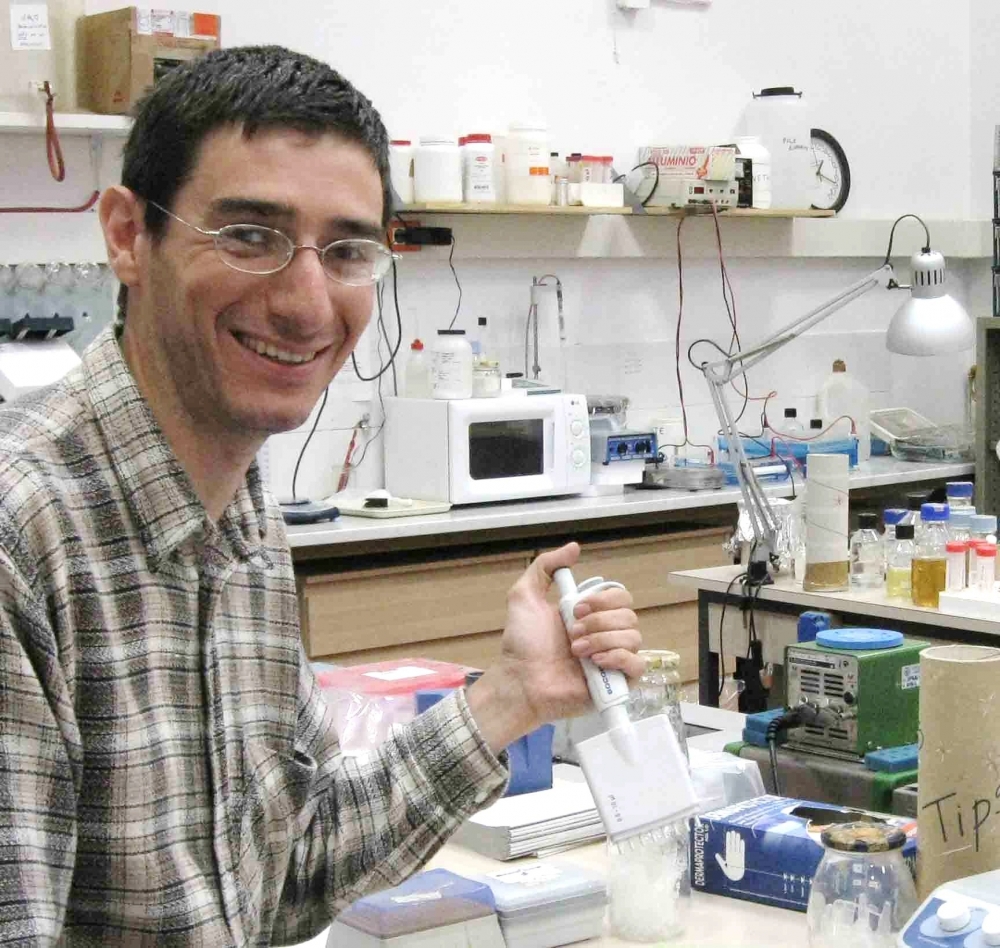 Assistant Professor (Reader) in the School of Science, class of Genomics, Master Degree course in Molecular Biotechnologies.
Assistant Professor (Reader) in the School of Science, class of Genomics, Master Degree course in Molecular Biotechnologies.
I'm working on the molecular microbial ecology and bacterial genomics of the nitrogen fixing symbiotic bacterium Sinorhizobium meliloti and of bacterial communities associated with plants.
Włodzimierz Krzyżosiak (Institute of Bioorganic Chemistry of Polish Academy of Sciences)
Speaker: prof. dr hab. czł. koresp. PAN Włodzimierz Krzyżosiak (Instytut Biochemii Organicznej PAN)
Talk: Patologiczne ekspansje mikrosatelitów – rola RNA w patogenezie i terapii
Time: December 2, 2014, 12:00
Venue: Intercollegiate Faculty of Biotechnology, Kładki 24, lecture hall B
Category: Invited lecture during Academy Open Ceremony at IFB
Włodzimierz Krzyżosiak, notka biograficzna
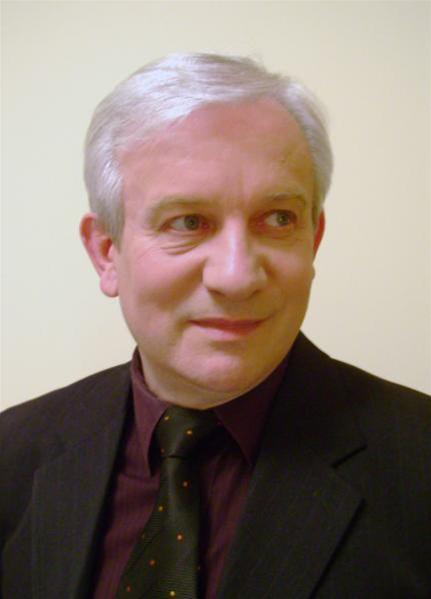 Profesor Włodzimierz Krzyżosiak jest kierownikiem Zakładu Biomedycyny Molekularnej w Instytucie Chemii Bioorganicznej PAN w Poznaniu. Jego droga naukowa wiodła od chemii strukturalnej kwasów nukleinowych, poprzez biologię i genetykę molekularną oraz genetykę nowotworów do medycyny molekularnej. Przez pięć lat pracował zagranicą w placówkach badawczych Anglii, Francji, USA i Japonii.
Profesor Włodzimierz Krzyżosiak jest kierownikiem Zakładu Biomedycyny Molekularnej w Instytucie Chemii Bioorganicznej PAN w Poznaniu. Jego droga naukowa wiodła od chemii strukturalnej kwasów nukleinowych, poprzez biologię i genetykę molekularną oraz genetykę nowotworów do medycyny molekularnej. Przez pięć lat pracował zagranicą w placówkach badawczych Anglii, Francji, USA i Japonii.
W ostatnich kilkunastu latach Jego aktywność naukowa skupiała się na poznawaniu roli RNA w patogenezie chorób neurologicznych człowieka wywoływanych ekspansją sekwencji mikrosatelitarnych oraz na poszukiwaniu nowych metod eksperymentalnej terapii w tej grupie chorób. Badał również proces biogenezy cząsteczek mikroRNA, zaburzenia ich funkcji w chorobach mikrosatelitarnych oraz ulepszał narzędzia technologii interferencji RNA dla potrzeb terapii.
Do wcześniejszych osiągnięć naukowych profesora Krzyżosiaka należy opracowanie nowej metody badania struktury RNA w roztworze z wykorzystaniem właściwości jonów metali oraz rekonstytucja funkcjonalnego rybosomu z naturalnych białek i syntetycznego rRNA. Jego nowsze osiągnięcia to stworzenie strukturalnych podstaw do badań roli RNA w patogenezie chorób mikrosatelitarnych, stwierdzenie udziału toksycznego RNA w patomechanizmie choroby Huntintona i opracowanie nowego podejścia terapeutycznego dla tej choroby z wykorzystaniem cząsteczek siRNA działających jak mikroRNA.
Wyniki badań prowadzonych przez profesora Krzyżosiaka zostały trzykrotnie wyróżnione Nagrodą Polskiego Towarzystwa Biochemicznego im. Jakuba Parnasa za najlepszą pracę eksperymentalną wykonaną w polskim laboratorium. W roku 2004 został członkiem korespondentem PAN, w 2007 laureatem Nagrody FNP, a w 2013 odznaczony Krzyżem Oficerskim Orderu Odrodzenia Polski.
Agnieszka Bernat-Wójtowska (Intercollegiate Faculty of Biotechnology UG&MUG, Poland)
Speaker: Agnieszka Bernat-Wójtowska, PhD (Intercollegiate Faculty of Biotechnology of University of Gdansk and Medical University of Gdansk, Poland)
Talk: Embryonic stem cells: tools, cure and more
Time: November 28, 2014, 9:00
Venue: Intercollegiate Faculty of Biotechnology of UG&MUG, Kładki 24, Gdańsk, lecture hall B
Category: Lecture
Binay Chaubey (Intercollegiate Faculty of Biotechnology UG&MUG, Poland)
Speaker: Binay Chaubey, PhD (Intercollegiate Faculty of Biotechnology of University of Gdansk and Medical University of Gdansk, Poland)
Talk: Intervention of HIV replication using anti-sense approach
Time: October 31, 2014, 9:00
Venue: Intercollegiate Faculty of Biotechnology of UG&MUG, Kładki 24, Gdańsk, Lecture Hall B
Category: Lecture
Jose Maria Valpuesta (Centro Nacional de Biotecnología, Spain)
Speaker: Jose Maria Valpuesta, PhD (Centro Nacional de Biotecnología, Consejo Superior de Investigaciones Científicas, Spain)
Talk: The protein folding pathway: a coordinated network of molecular machines
Time: October 17, 2014, 9:00
Venue: Intercollegiate Faculty of Biotechnology of UG&MUG, Kładki 24, Gdańsk, Lecture Hall B
Category: Invited seminar
José María Valpuesta, biographical note
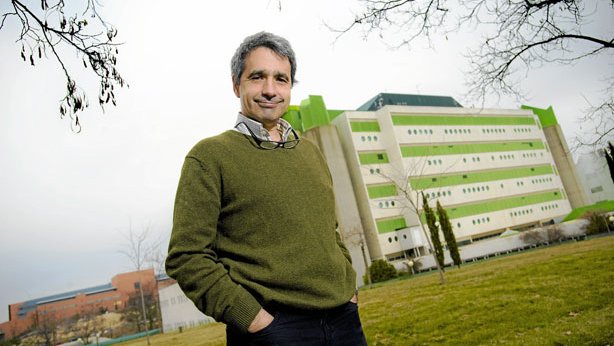 José María Valpuesta obtained his Ph.D. degree in biochemistry at the University of the Basque Country, Spain in 1985. Later he worked at the Centro de Biología Molecular (CSIC/Madrid, Spain). In 2003 he obtained the professor tile and started working at the Centro Nacional de Biotecnología. In 2006-7 held position of Vice-director and 2007-13 director of Centro Nacional de Biotecnología, one of the most important centers of molecular biology in Spain. Between 2005 and 2009 prof. Valpuesta held position of President of the Spanish Microscopy Society. Currently he is head of the Macromolecular Structure Department of the National Centre of Biotechnology.
José María Valpuesta obtained his Ph.D. degree in biochemistry at the University of the Basque Country, Spain in 1985. Later he worked at the Centro de Biología Molecular (CSIC/Madrid, Spain). In 2003 he obtained the professor tile and started working at the Centro Nacional de Biotecnología. In 2006-7 held position of Vice-director and 2007-13 director of Centro Nacional de Biotecnología, one of the most important centers of molecular biology in Spain. Between 2005 and 2009 prof. Valpuesta held position of President of the Spanish Microscopy Society. Currently he is head of the Macromolecular Structure Department of the National Centre of Biotechnology.
As the researcher prof. Valpuesta is co-author of 137 indexed papers (among others in Nature, Science, Nat Struct. Mol. Biol., Nat Cell Biol, Mol. Cell, PNAS USA, EMBO J.), in the field of membrane structure, protein folding, molecular chaperones, macromolecular complexes and electron microscopy. Citation Hirsch index: 42 (~5700 citations). Author of 1 book and 5 chapters in collective books. His achievements were honored by awards granted by Spanish Ministry of Education, Bruker Prize of the Biophysical Spanish Society, European Microscopy Society. In addition, prof. Valpuesta is the member of “Faculty of 1000” and “Academia Europaea”. He worked as reviewer for National Science Foundation (USA), Israel Science Foundation, Human Frontiers Science Foundation, Cancer Research UK, Wellcome Trust Foundation, Cancer Research UK, Argentinian Science Foundation (FONDECIT) and several Spanish Funding agencies.
Prof. Valpuesta as teacher gives lectures about Biomedicine, Molecular and Cell Biology and Biophysics at Universidad Autónoma de Madrid. Moreover, occasionally he gives lectures at University of Crete (Greece), Lisbon and Porto (Portugal), Santiago (Chile). Until 1995 he was supervisor of 10 postdocks, 15 Ph.D students and 6 Master students.
During last 10 years prof. Valpuesta has helped to establish cryoelectron microscopy at the Centro Nacional de Biotecnología (CNB), and have contributed to forming a core of seven groups at the institute that use this and other techniques, complemented by image processing tools, to structurally characterize a large variety of biological specimens. This community of electron microscopists is perhaps unique in the world and certainly in Spain, where his group is a reference. The most influential part of his work deals with the structural and functional characterization of various chaperones, which has helped to structurally confirm the existence of a network of interactions between different chaperones that make the protein folding pathway more efficient. He has published more than 60 papers over the last 10 years, some in such journals as Science, Mol. Cell, Nat Cell Biol, Nat Struct Mol Biol, J Exp Med, PNAS USA, and EMBO J. Seven of these papers were selected by the “Faculty of 1000”; his work has received more than 2500 citations since 2009.
He also pioneered in Spain the use of single-molecule techniques such as optical tweezers, which have been used to study the forces involved in the function of different protein and nucleic acid molecules.
Vladimir Teif (German Cancer Research Center, Heidelberg)
Speaker: Vladimir Teif, PhD (German Cancer Research Center DKFZ and BioQuant, Heidelberg)
Talk: Deciphering the rules of epigenetic regulation during stem cell development
Time: June 27, 2014, 10:00
Venue: Intercollegiate Faculty of Biotechnology of UG&MUG, Kładki 24, Gdańsk, lecture hall B
Category: Invited seminar
The cell fate is controlled by many epigenetic factors including DNA methylation, transcription factor (TF) binding, histone modifications, chromatin remodelers and nuclear RNAs, to name just a few. For the purpose of the current talk I put nucleosome positioning on the top of this scheme. Such a choice is motivated by the fact that if there is no nucleosome at a given position, there are also no histone modifications, and TFs can bind their sites freely. As we will see during the talk, nucleosome positioning is also tightly linked to DNA methylation and nuclear RNAs. I will mostly focus on the interplay of the following three features: DNA methylation/demethylation, TF binding and nucleosome positioning. Our very recent work has provided new insights into this interplay. We have combined high‐throughput MNase‐seq and ChIP‐seq sequencing with theoretical modeling to decipher nucleosome repositioning as a novel feedback mechanism that connects DNA methylation/demethylation with transcription factor binding. As a specific example of a transcription factor utilizing this mechanism I will consider an insulator protein CTCF. Our biophysical model allows predicting quantitative changes of CTCF occupancy during stem cell development as a function of changes in DNA methylation and nucleosome positioning.
References: 1) Teif V.B., Beshnova D.A., Marth C., Vainshtein Y., Mallm J.‐P., Höfer T. and Rippe K. (2014). Nucleosome repositioning links DNA (de)methylation and differential CTCF binding during stem cell development. Genome Research. Advance Access. DOI: 10.1101/gr.164418.113 2) Teif V.B., Vainshtein Y., Caudron‐Herger M., Mallm J.‐P., Marth C., Höfer T., *Rippe K. (2012) Genome‐wide nucleosome positioning during embryonic stem cell development. Nature Struct. Mol. Biol. 19, 1185‐92.
Michał Dąbrowski (Nencki Institute, Poland)
Speaker: Michał Dąbrowski, PhD (Nencki Institute, Poland)
Talk: Analysis of global transcriptional regulation in brain starting from genomic and expression data
Time: April 11, 2014, 9:00
Venue: Intercollegiate Faculty of Biotechnology of UG&MUG, Kładki 24, Gdańsk, lecture hall B
Category: Invited seminar
Michał Dabrowski, biographical note
Physician by education, PhD in experimental molecular biology, about 10 years’ experience in bioinformatics, mainly analysis of global gene expression and regulatory genomics data.
Employment history (main places): Nencki Institute, Szpital Specjalistyczny w Kościerzynie, Katholieke Universiteit Leuven. Currently: Nencki Institute, Laboratory of Molecular Neurobiology, head: prof. Bożena Kamińska.
Key scientific achievements: demonstration of cell-autonomous regulation of differentiation of hippocampal neurons, identification of transcriptional regulators common to stroke and seizures, demonstration that matrix attachment region binding protein modulates transcriptional activation, identification of key proteins stimulating host microglia to promote tumor growth, creation of the first regulatory genomics database for the rat.
Ongoing projects: a bioinformatics project of creation of a portal with tools for regulatory genomics, and a (starting) experimental project utilizing very high-throughput next generation sequencing to identify TFs involved in microglia reeducation by glioma.






